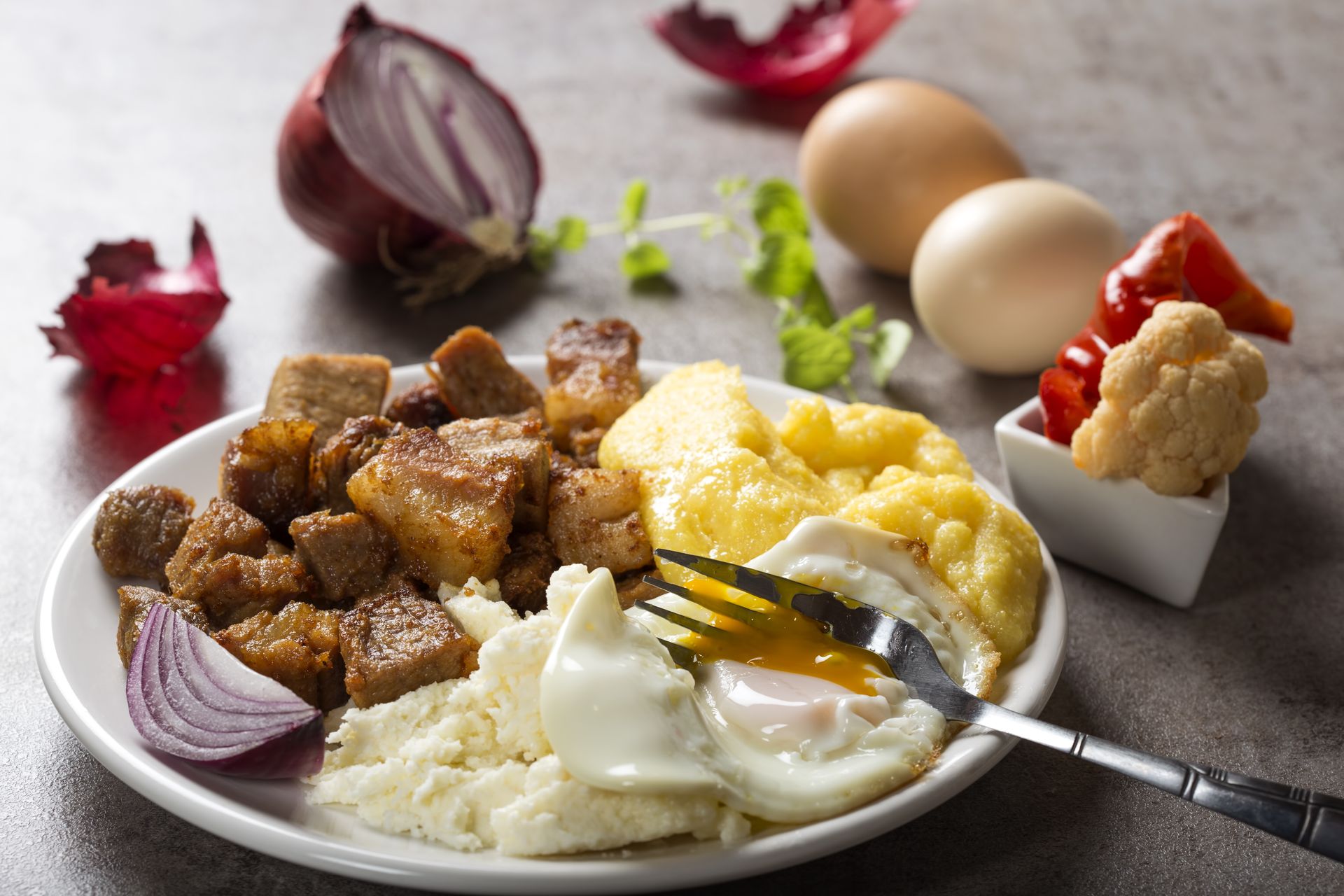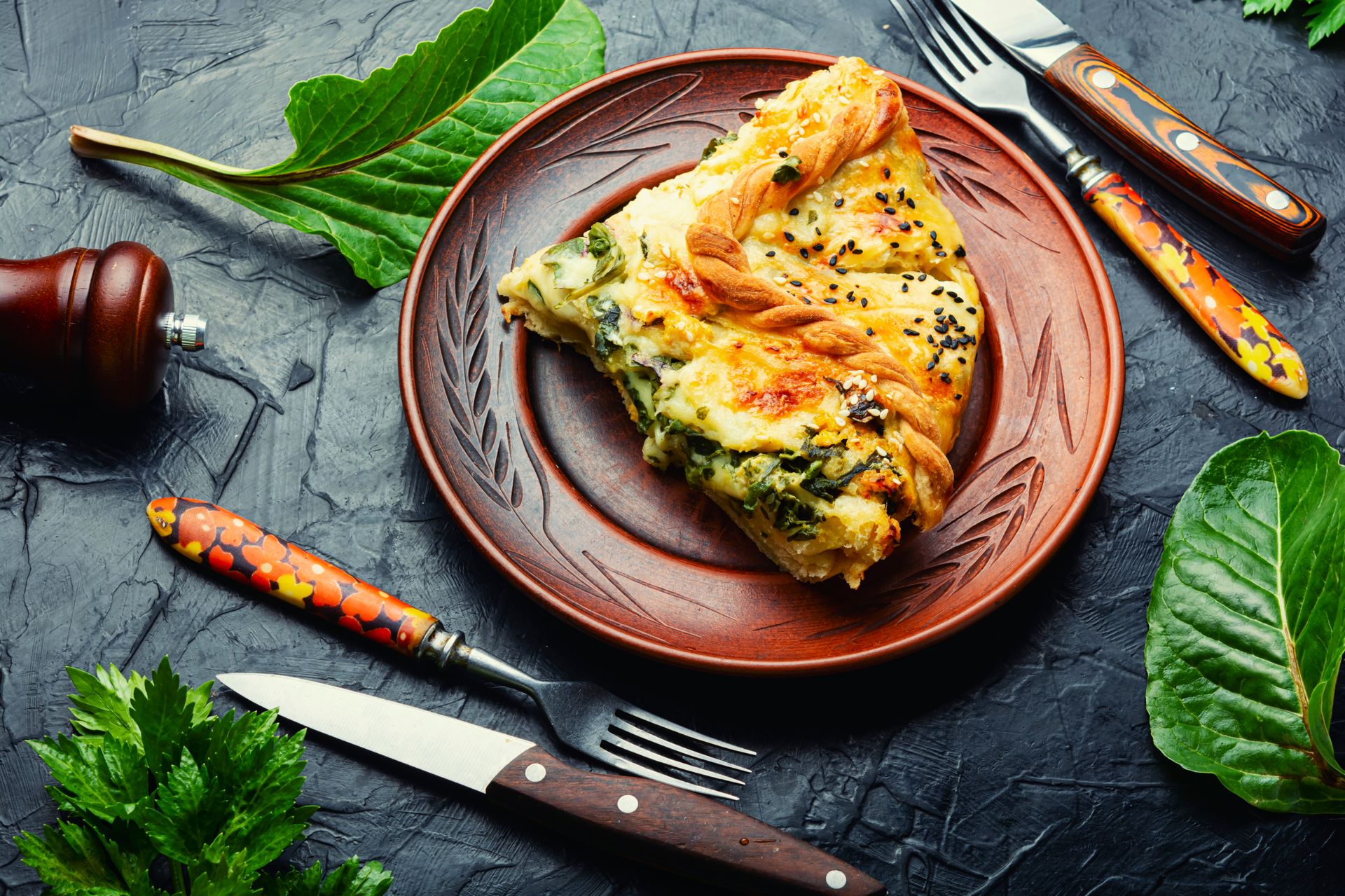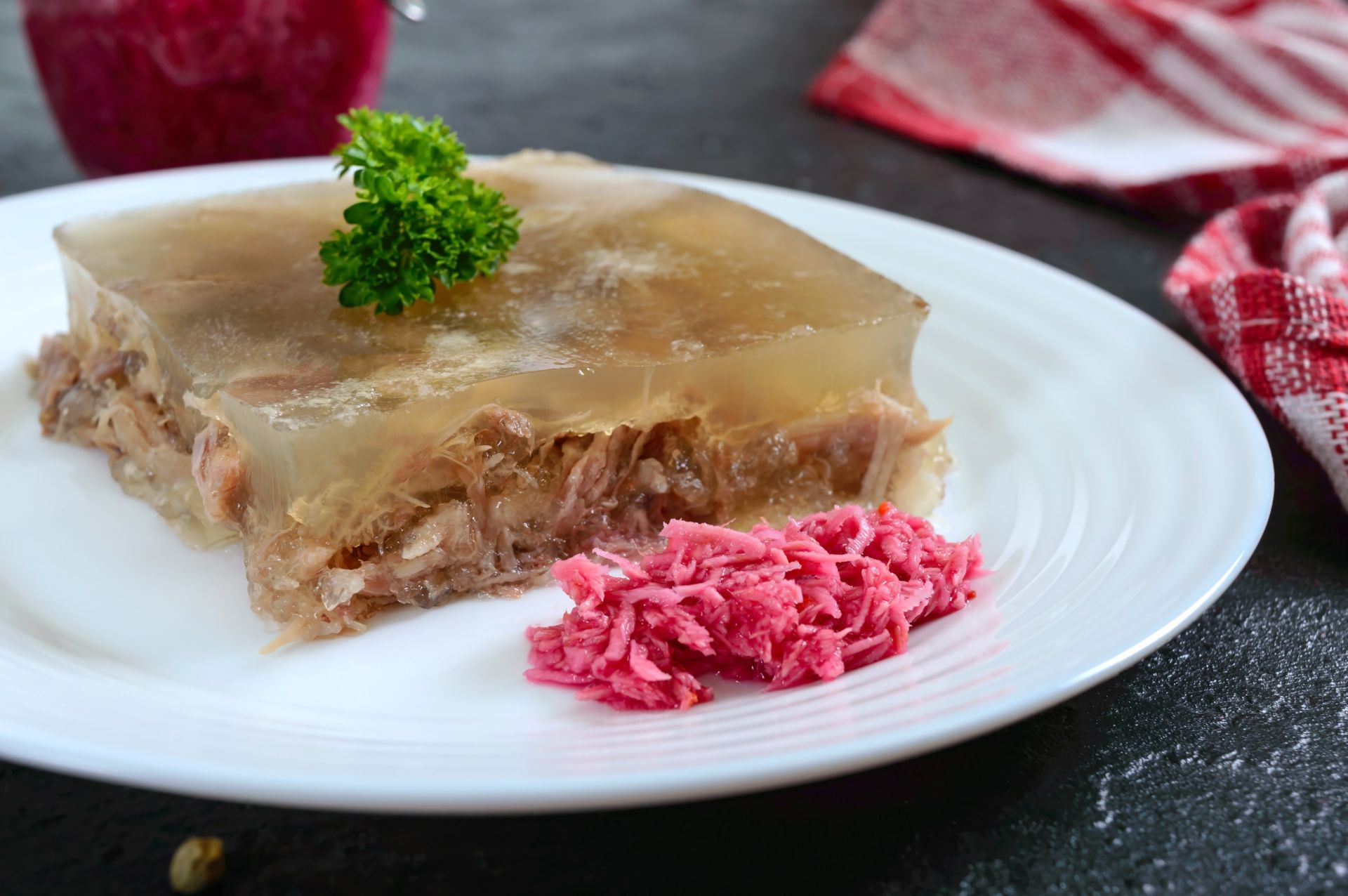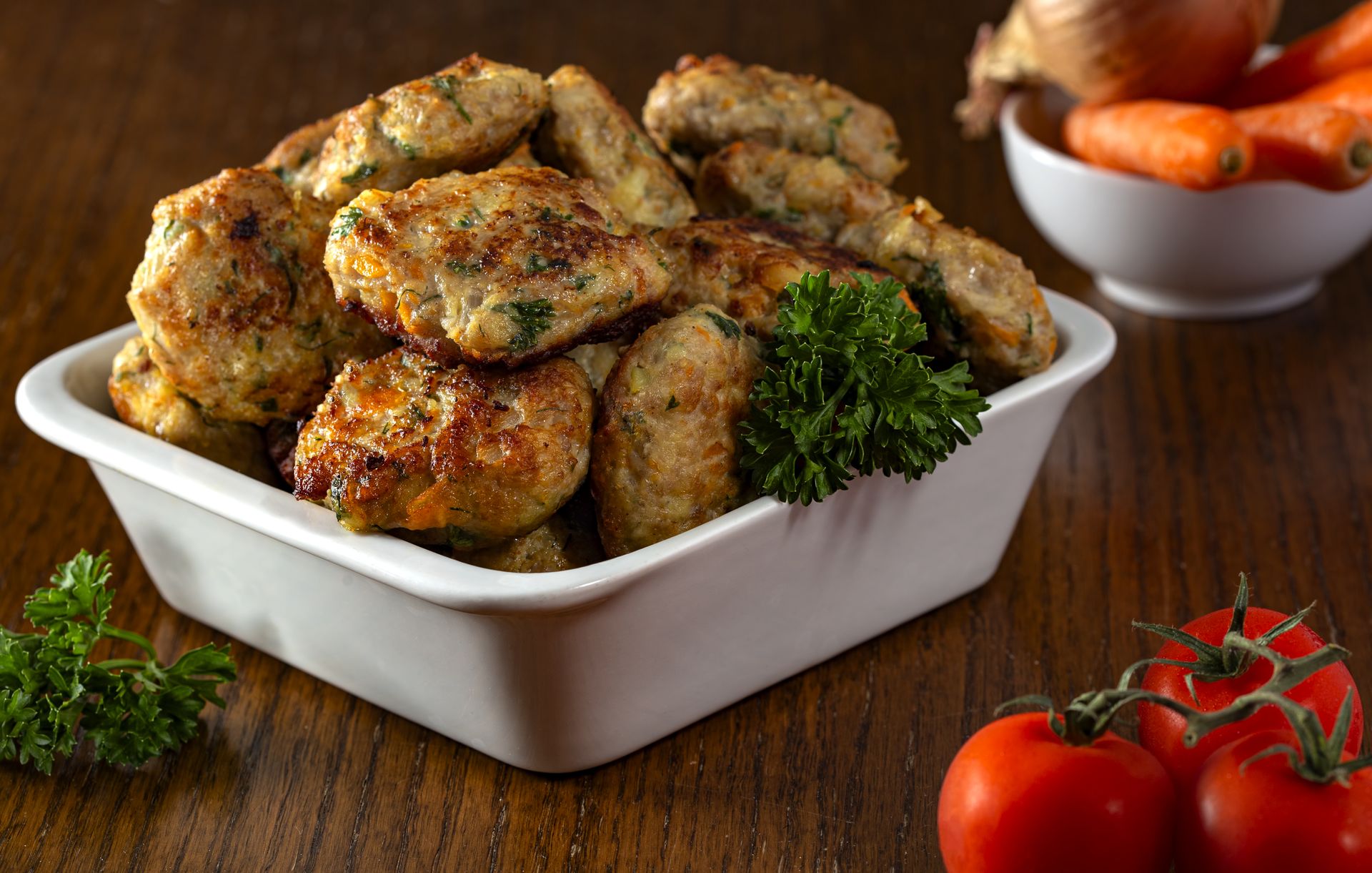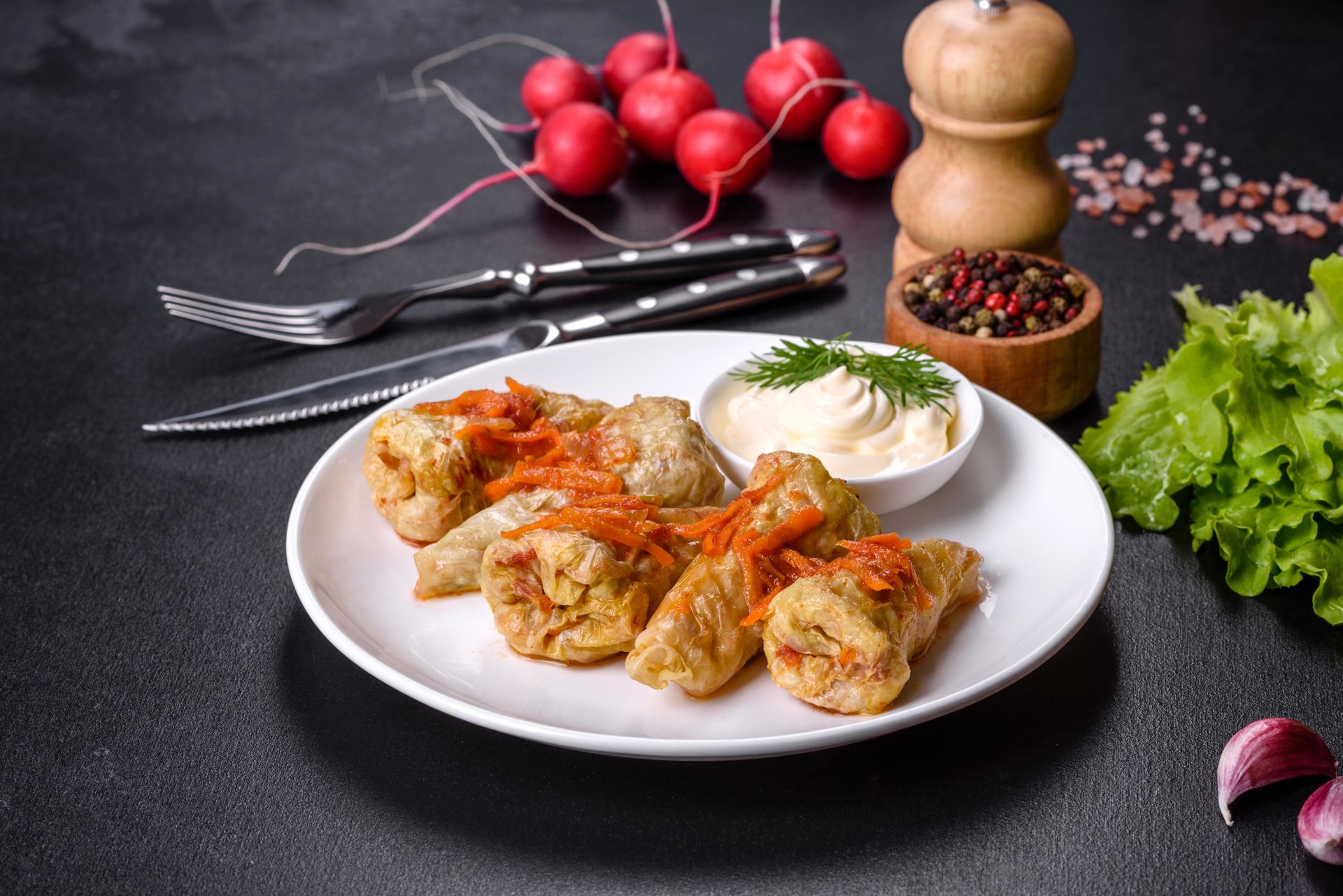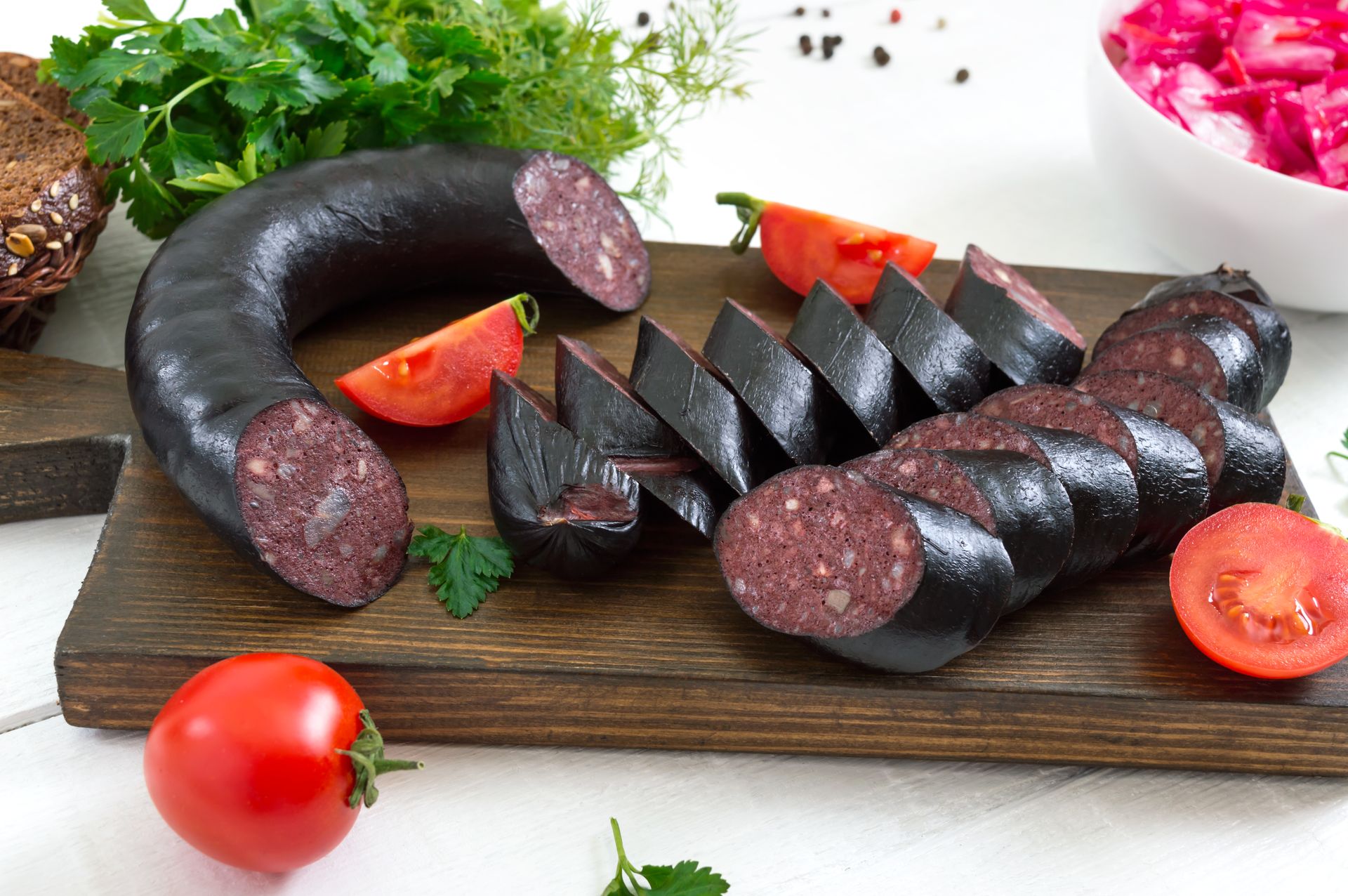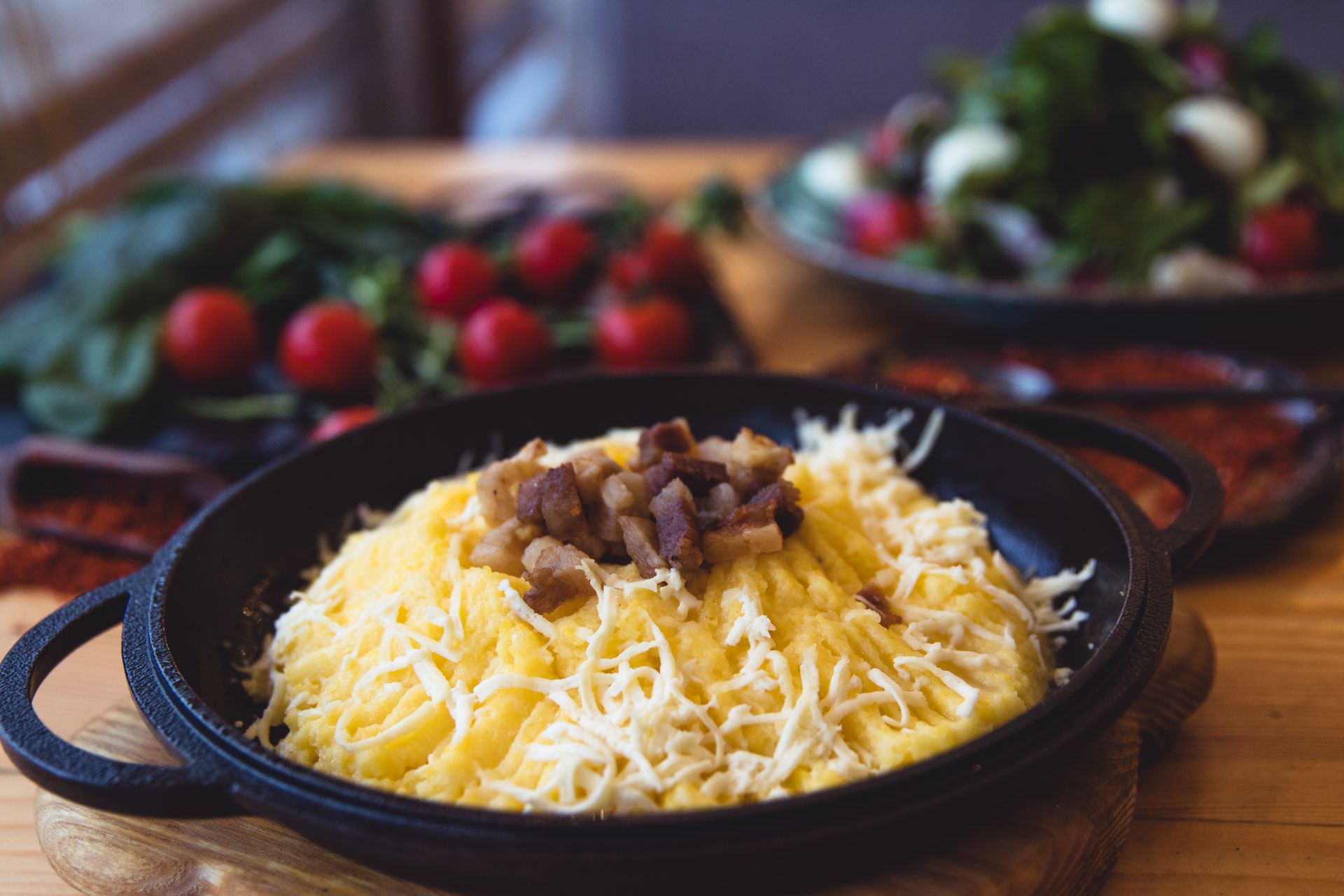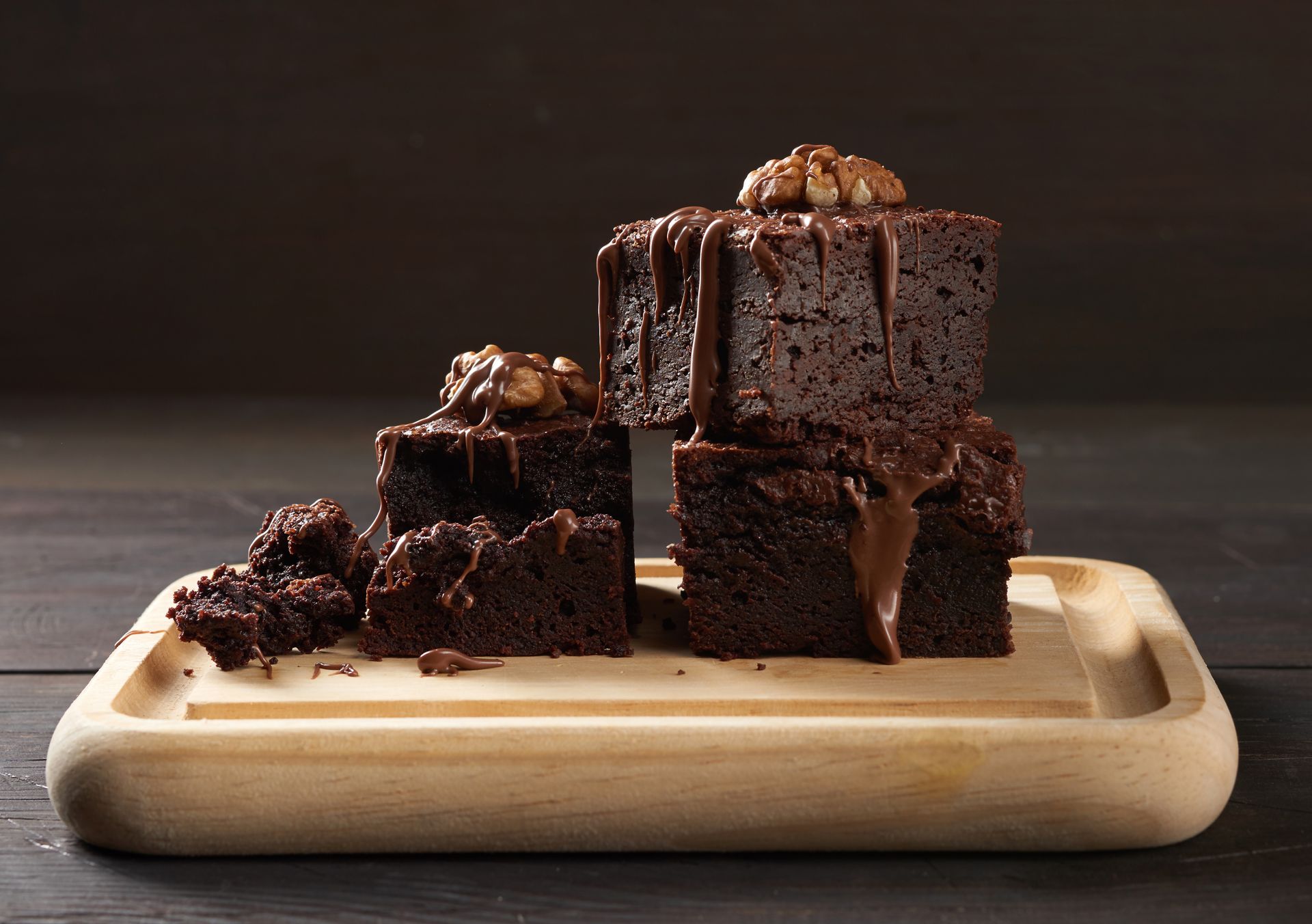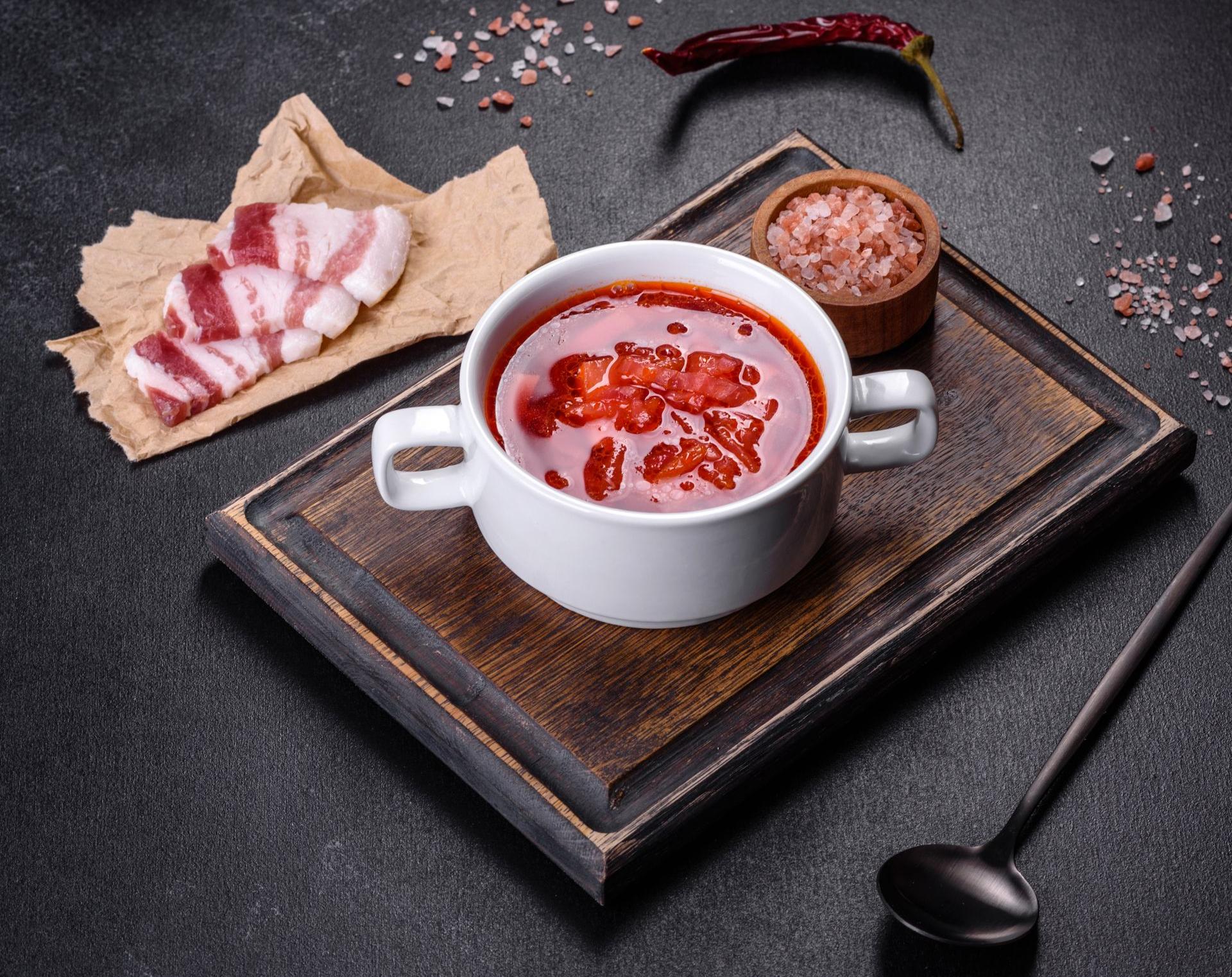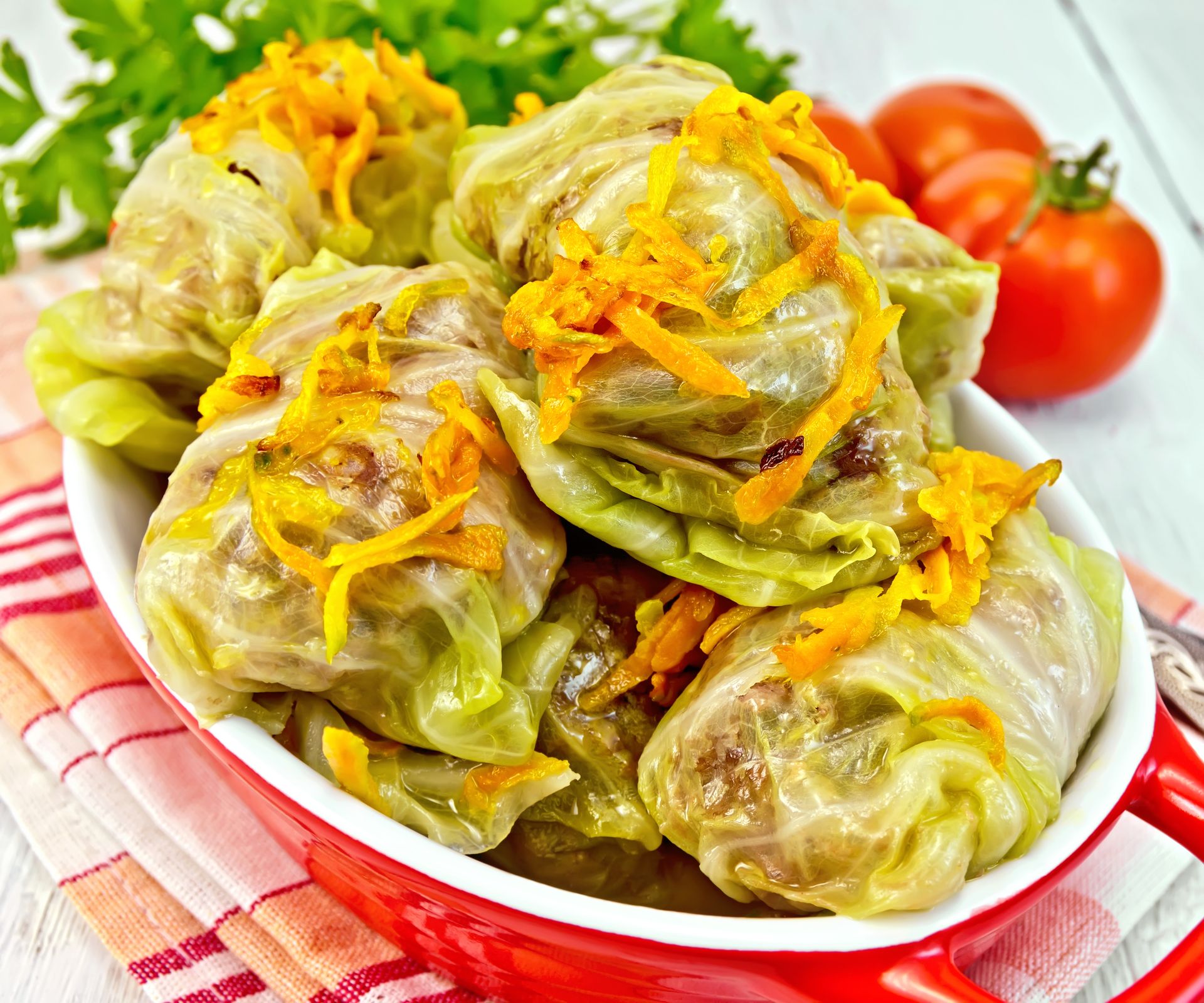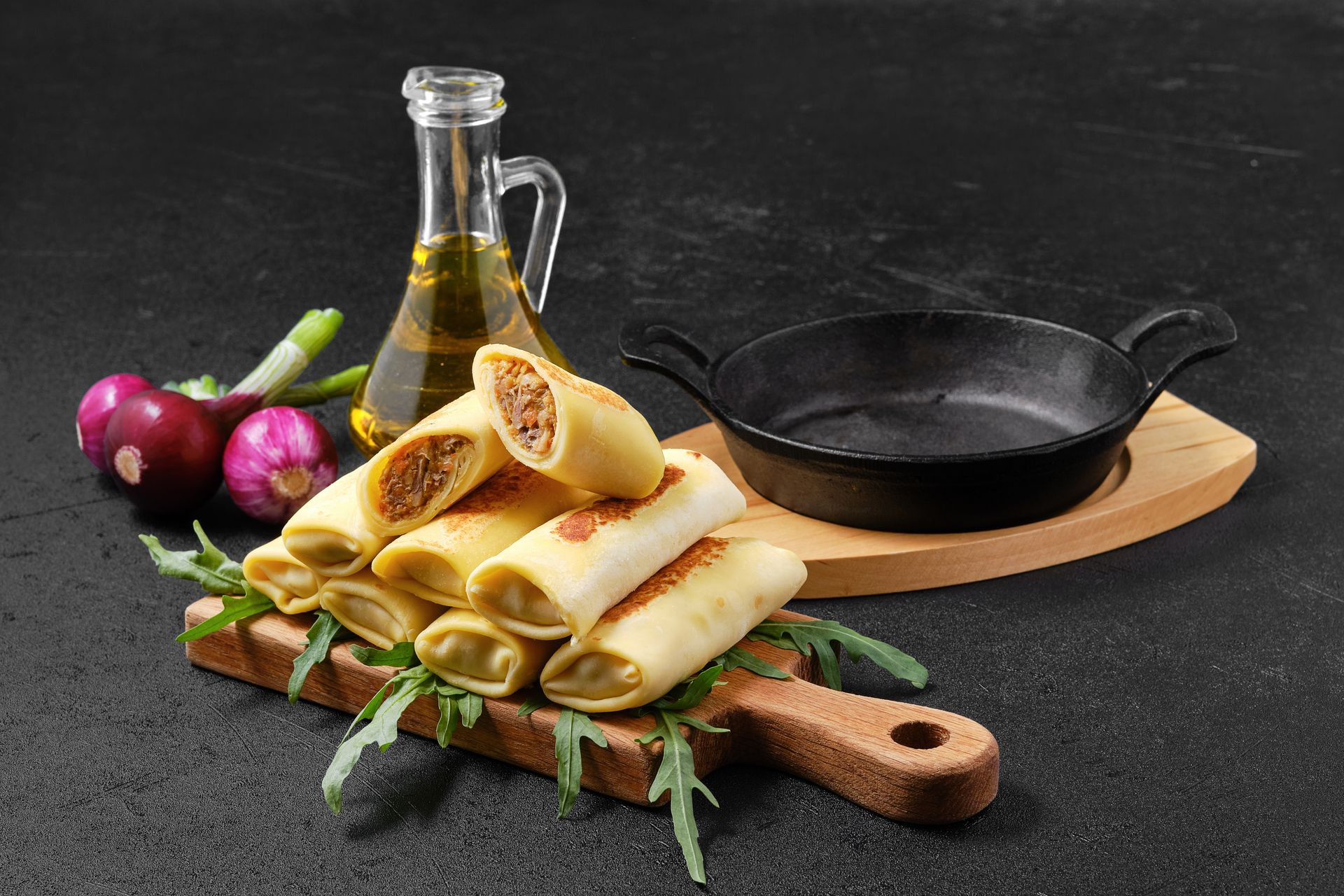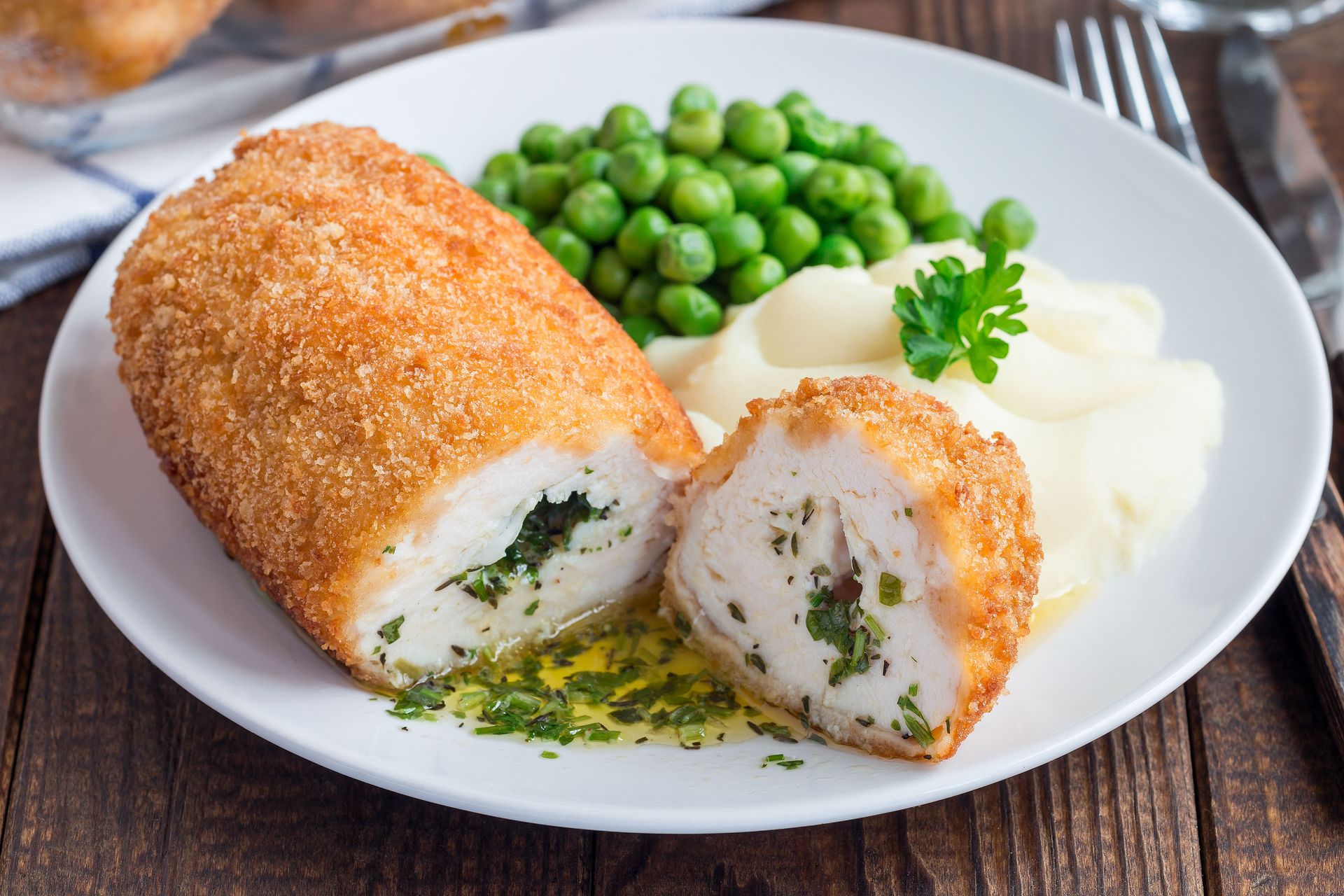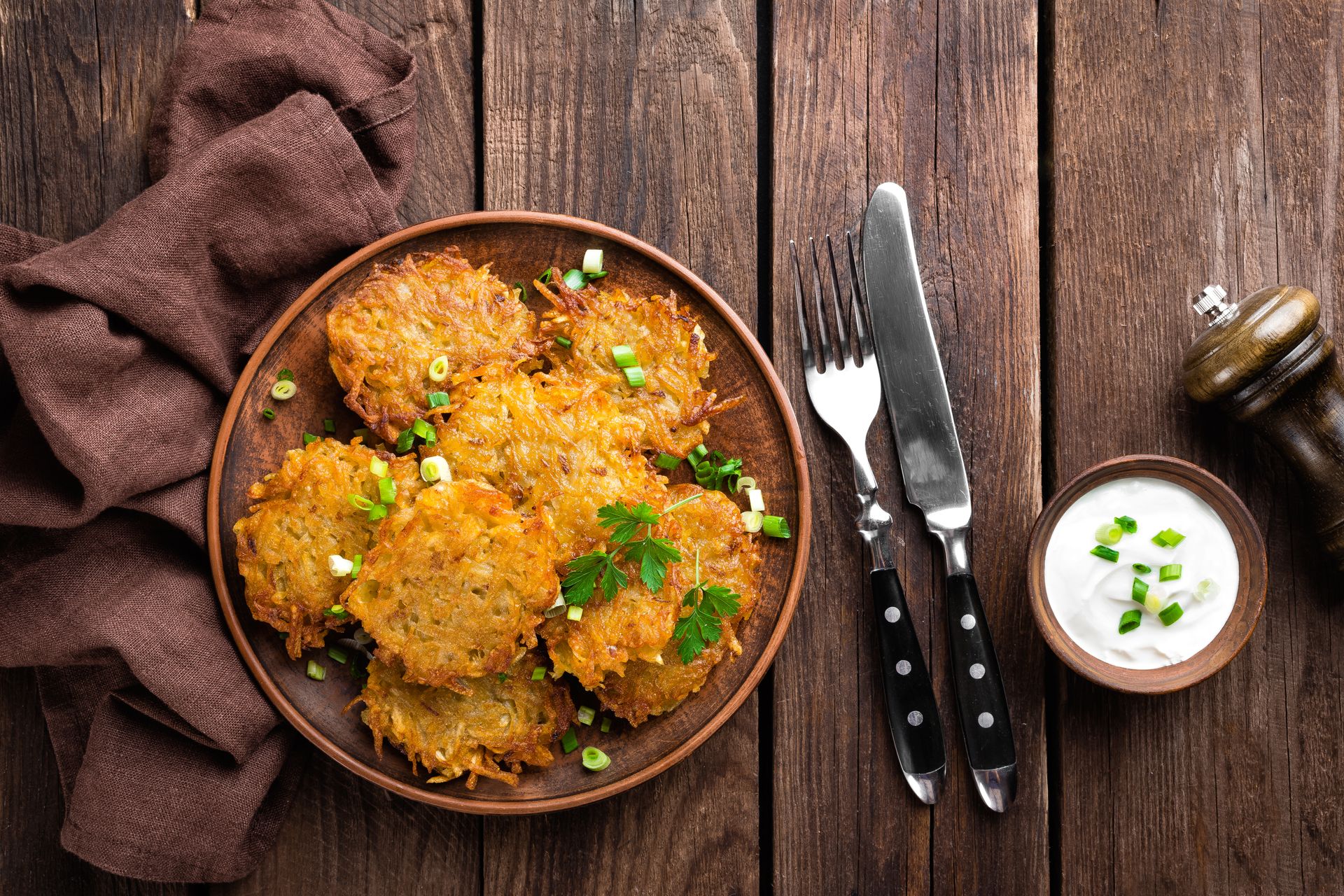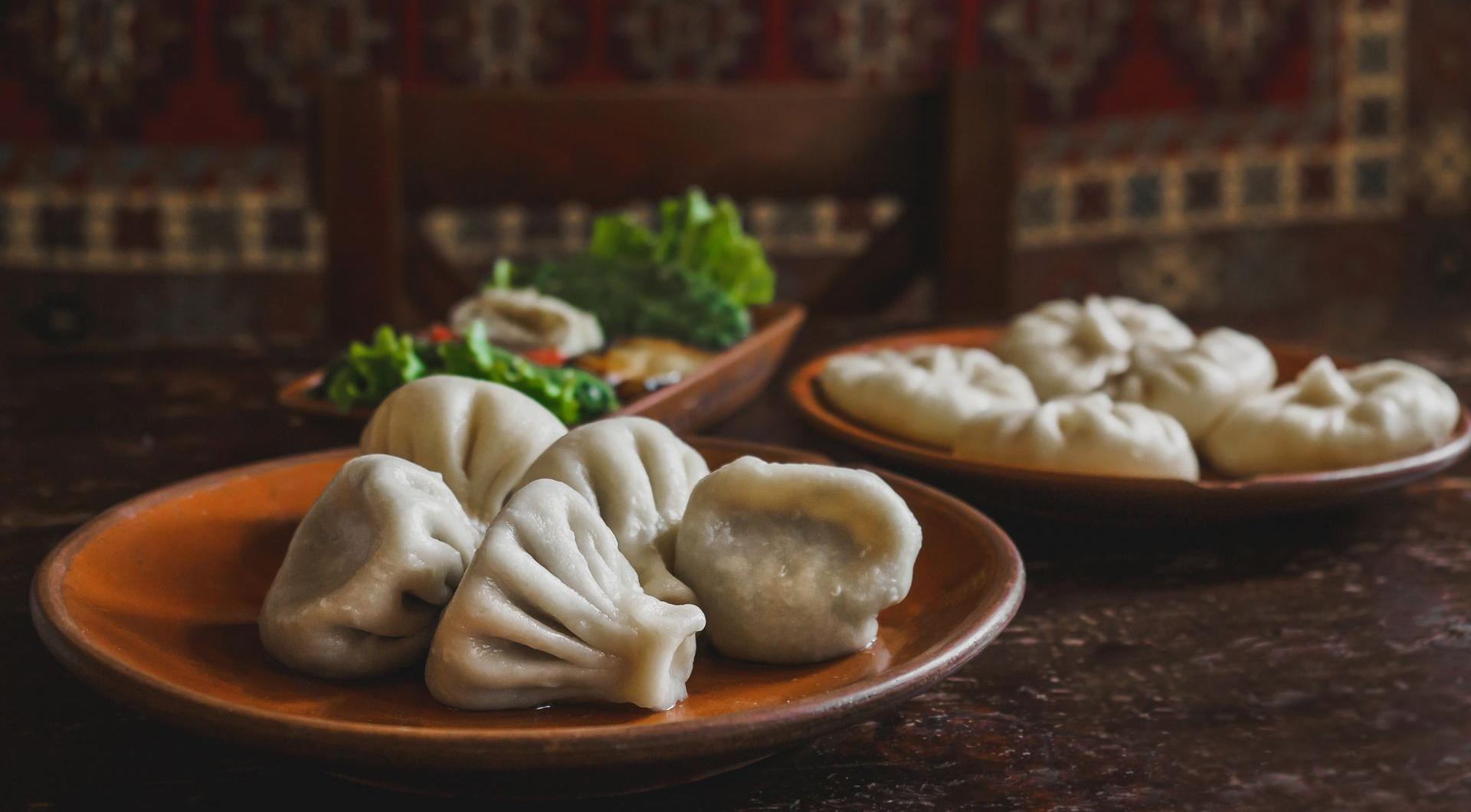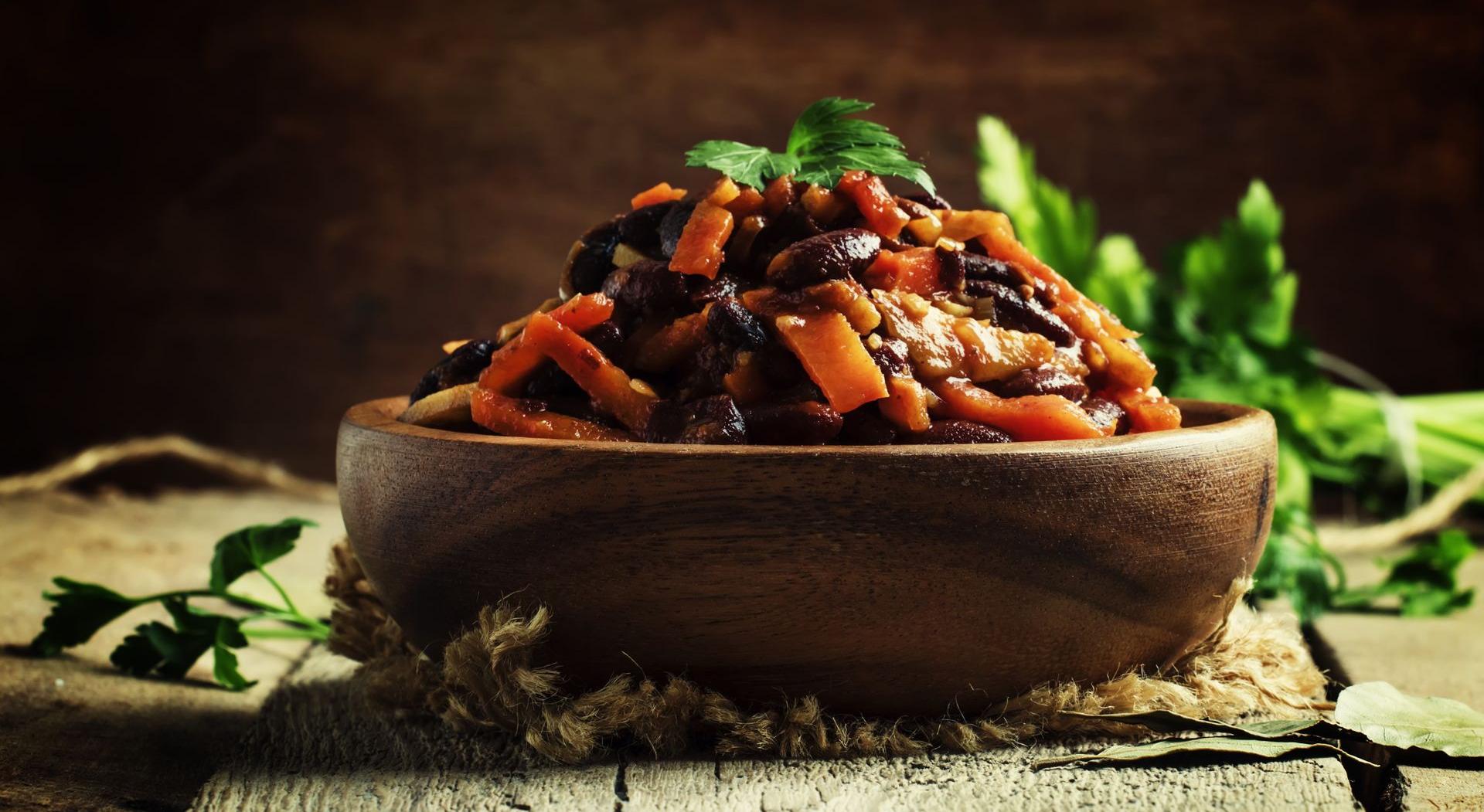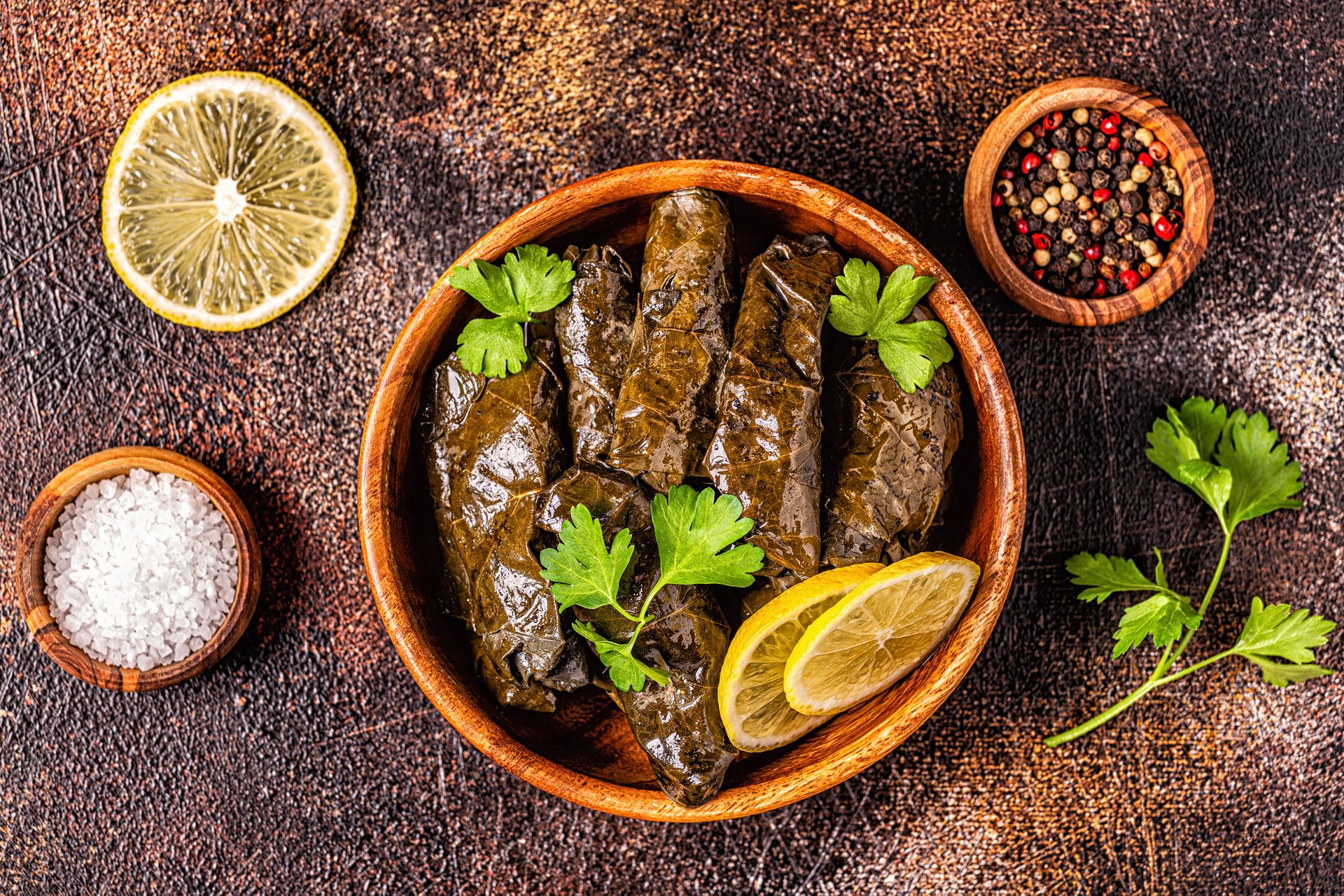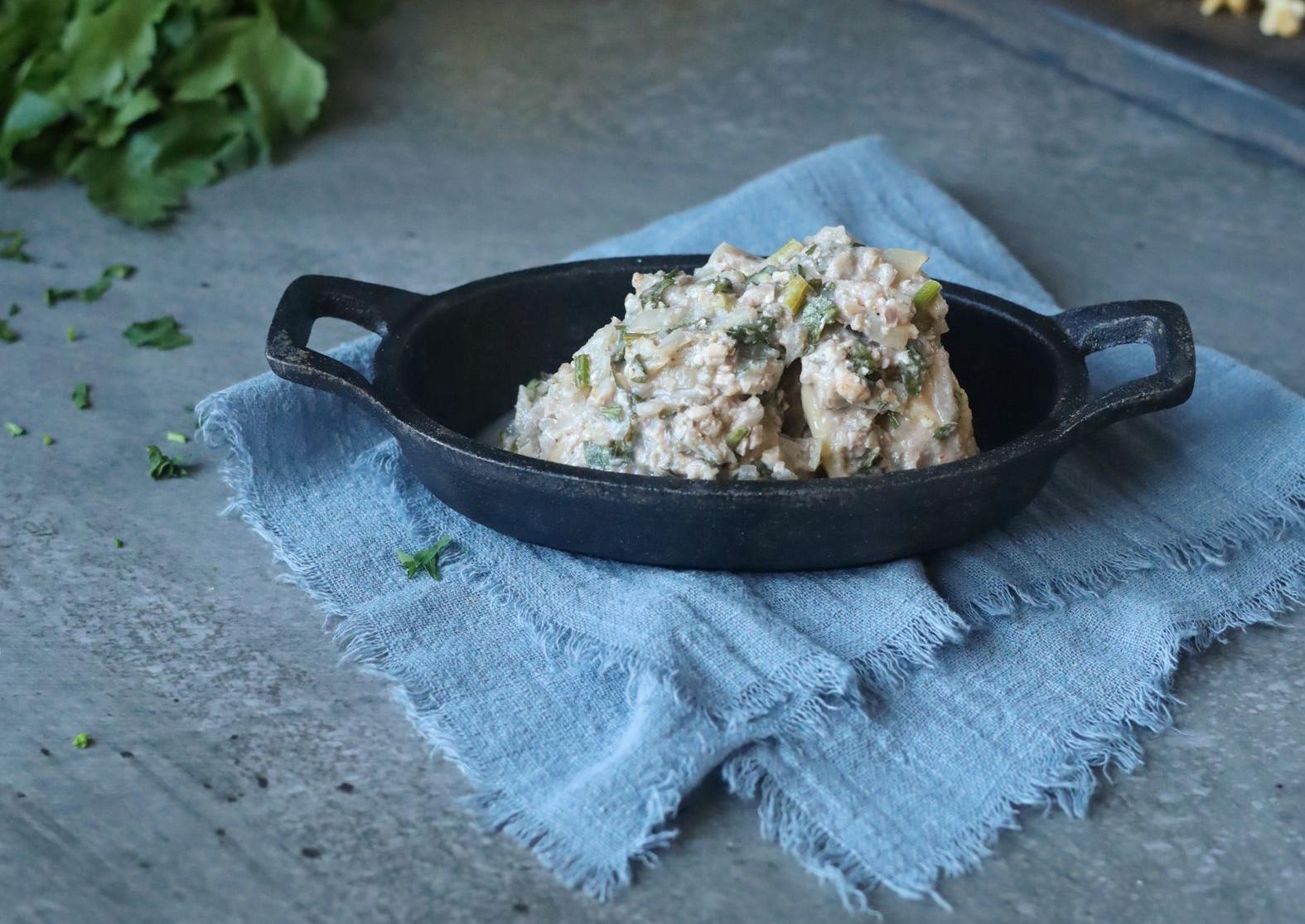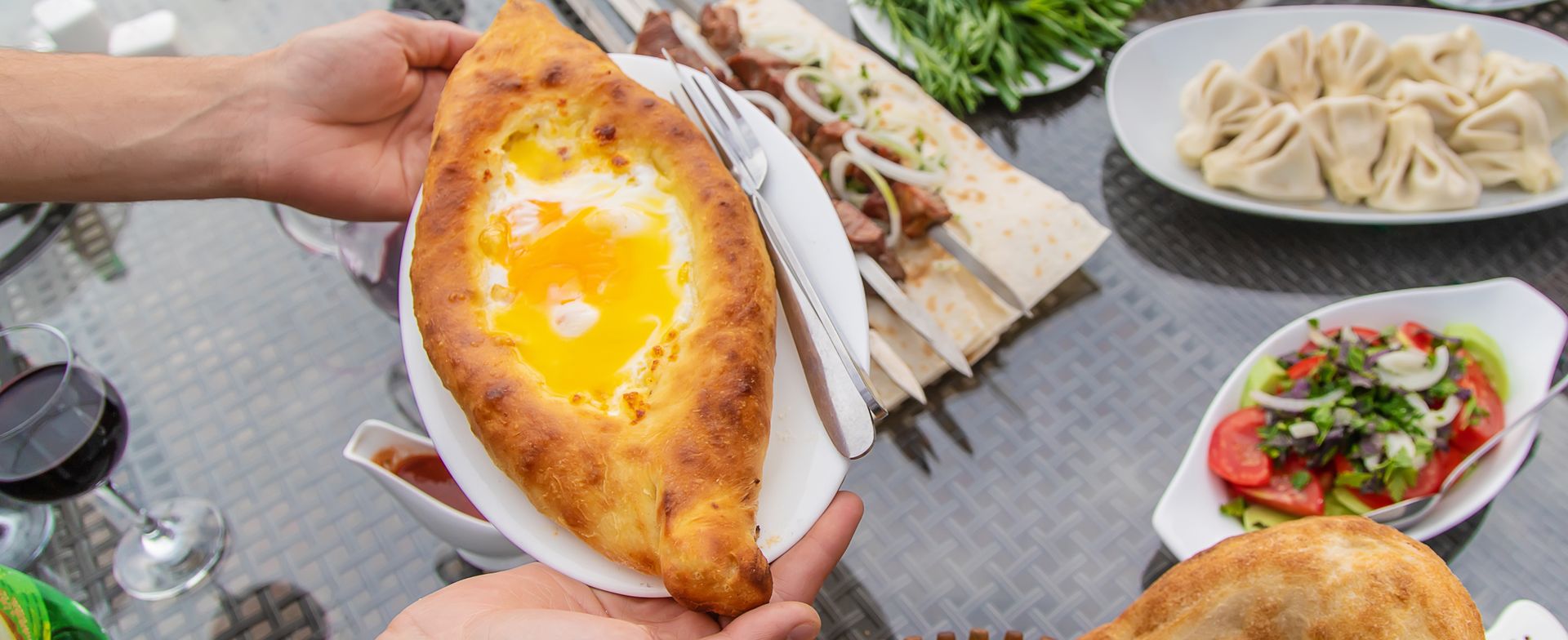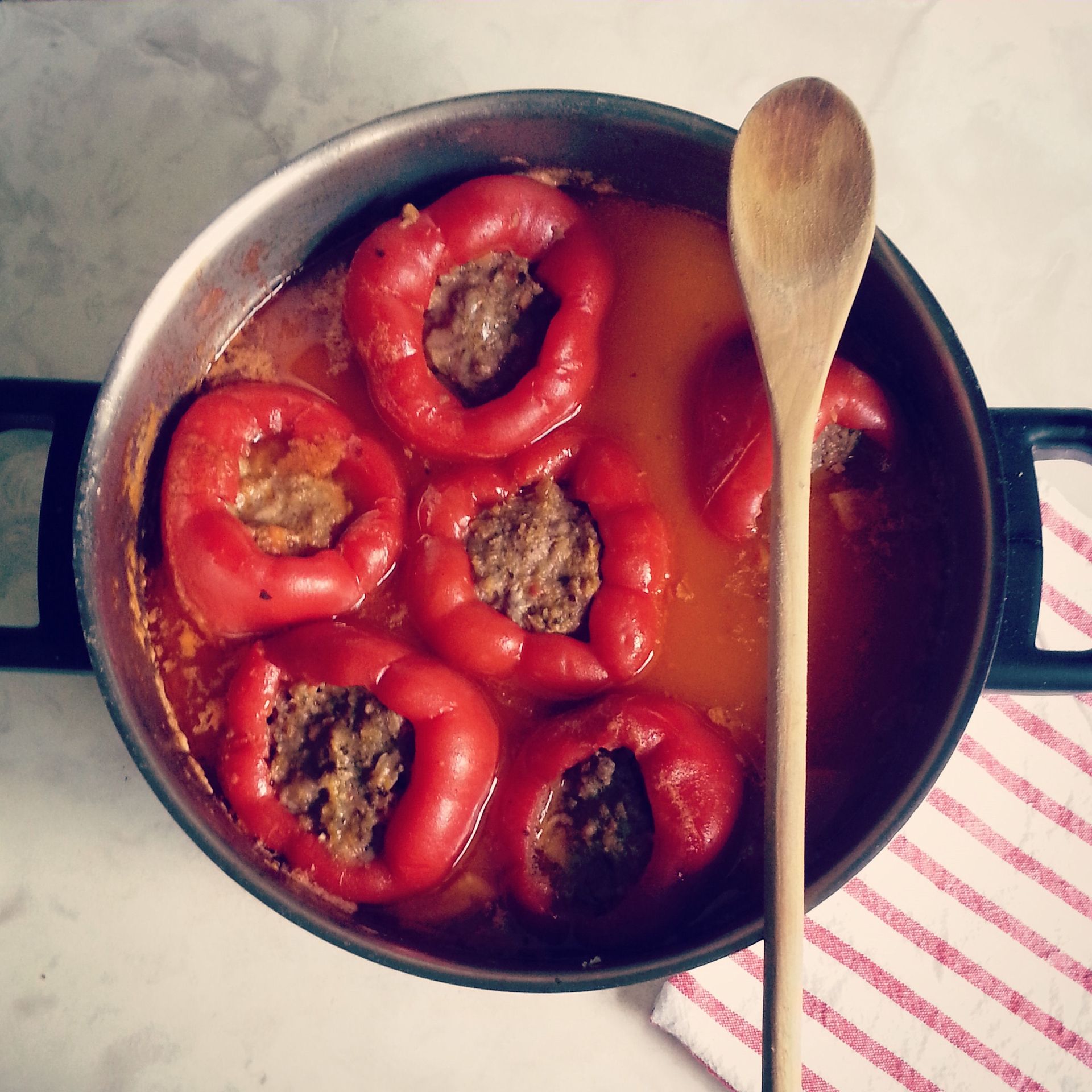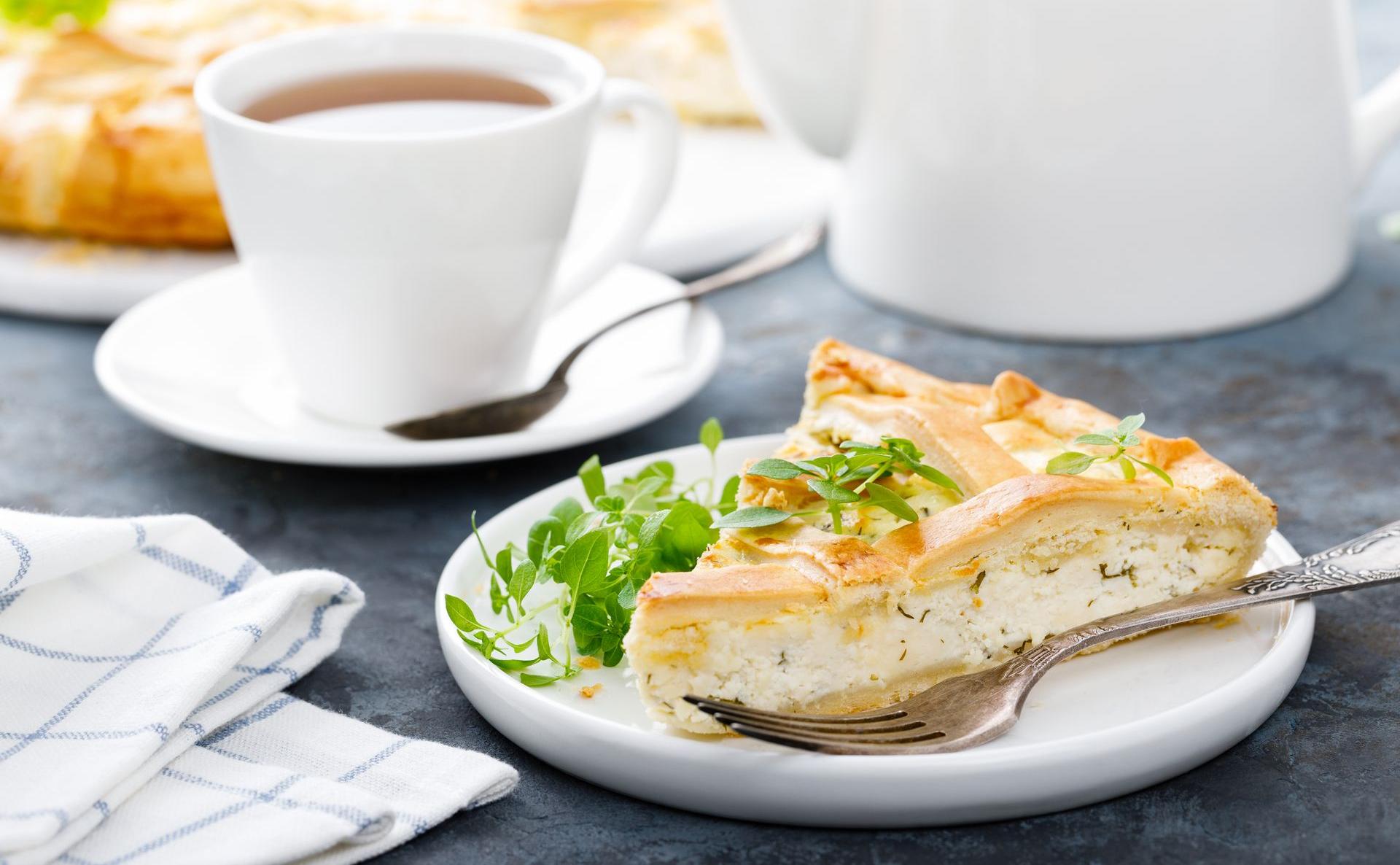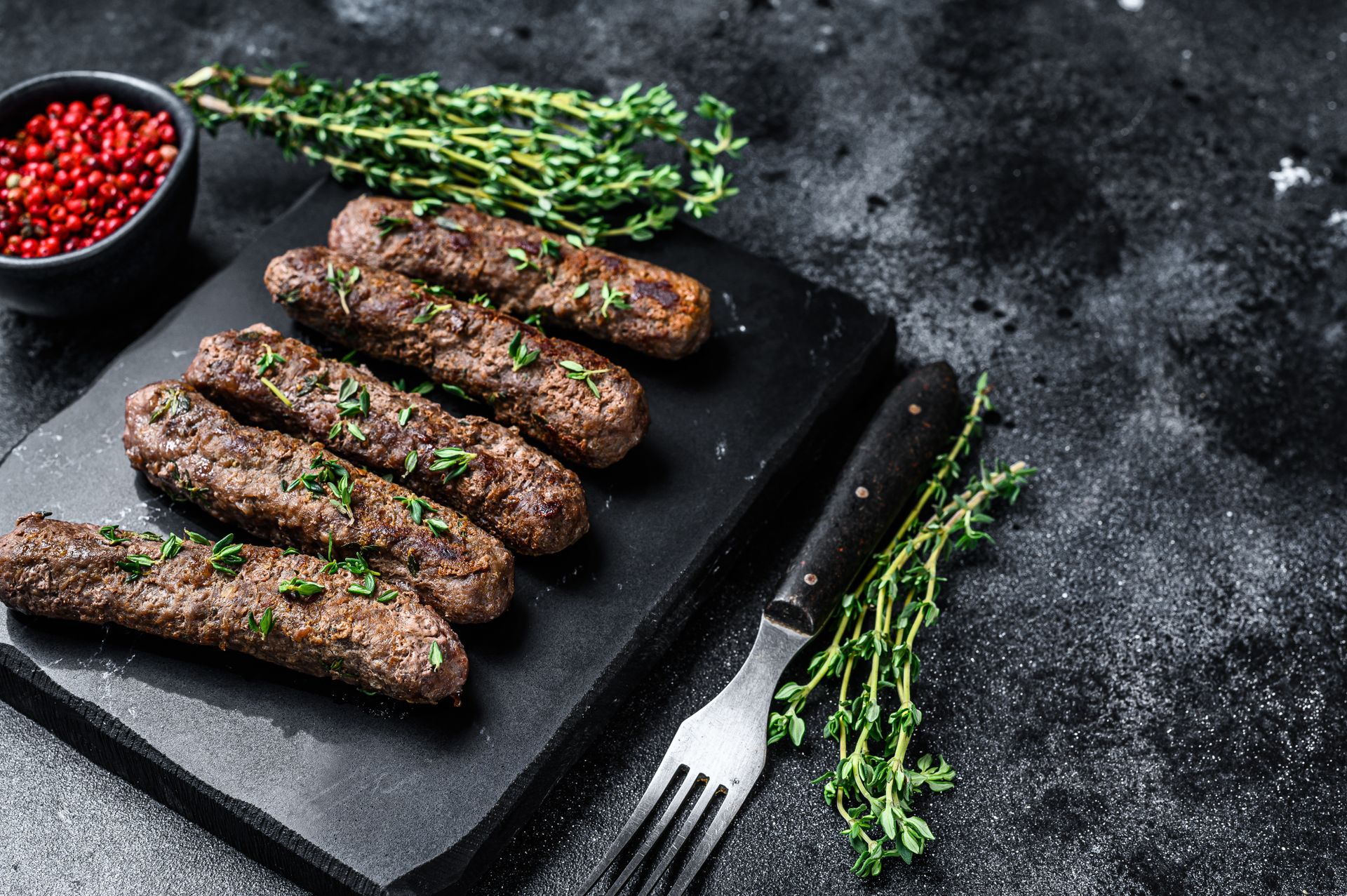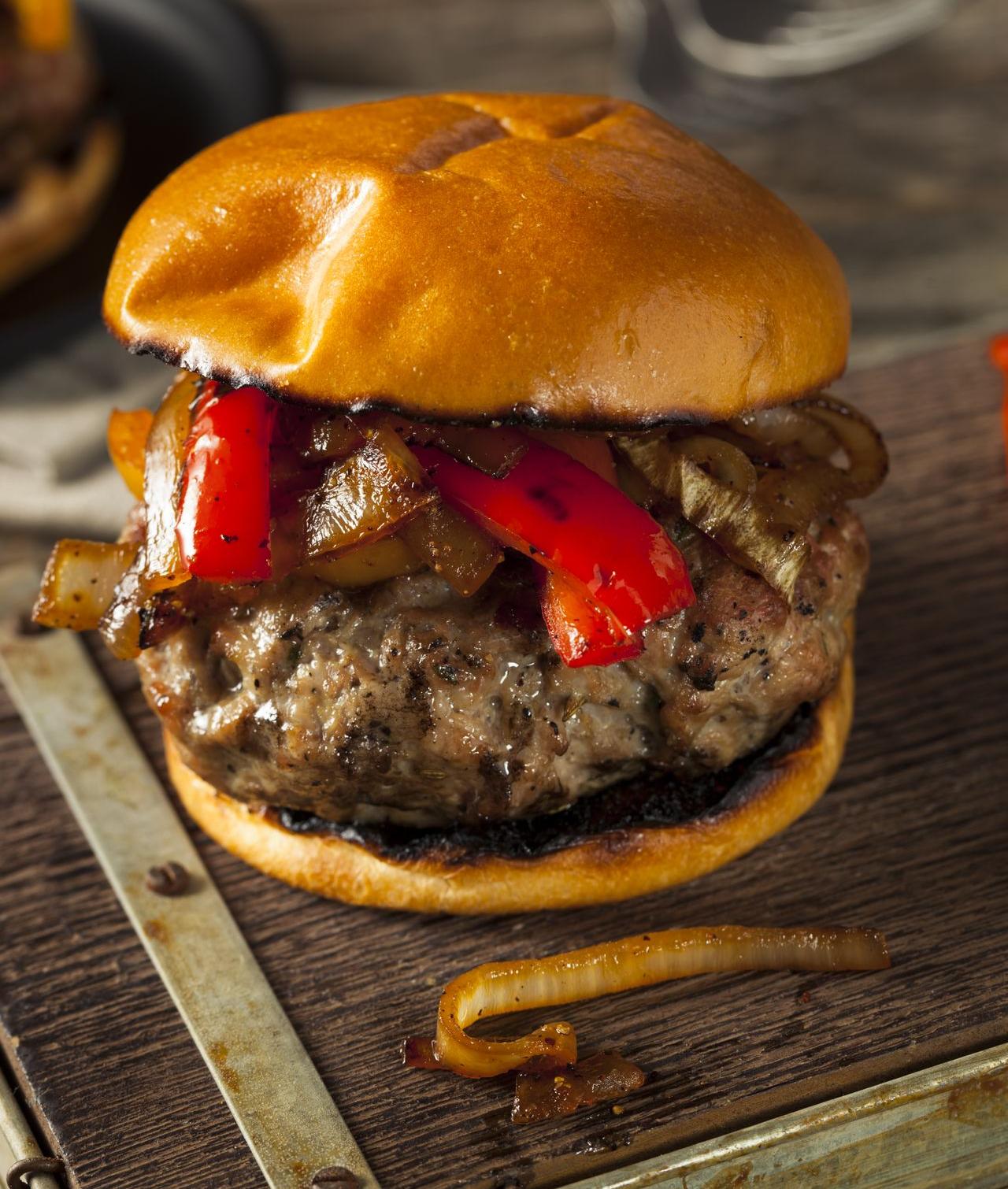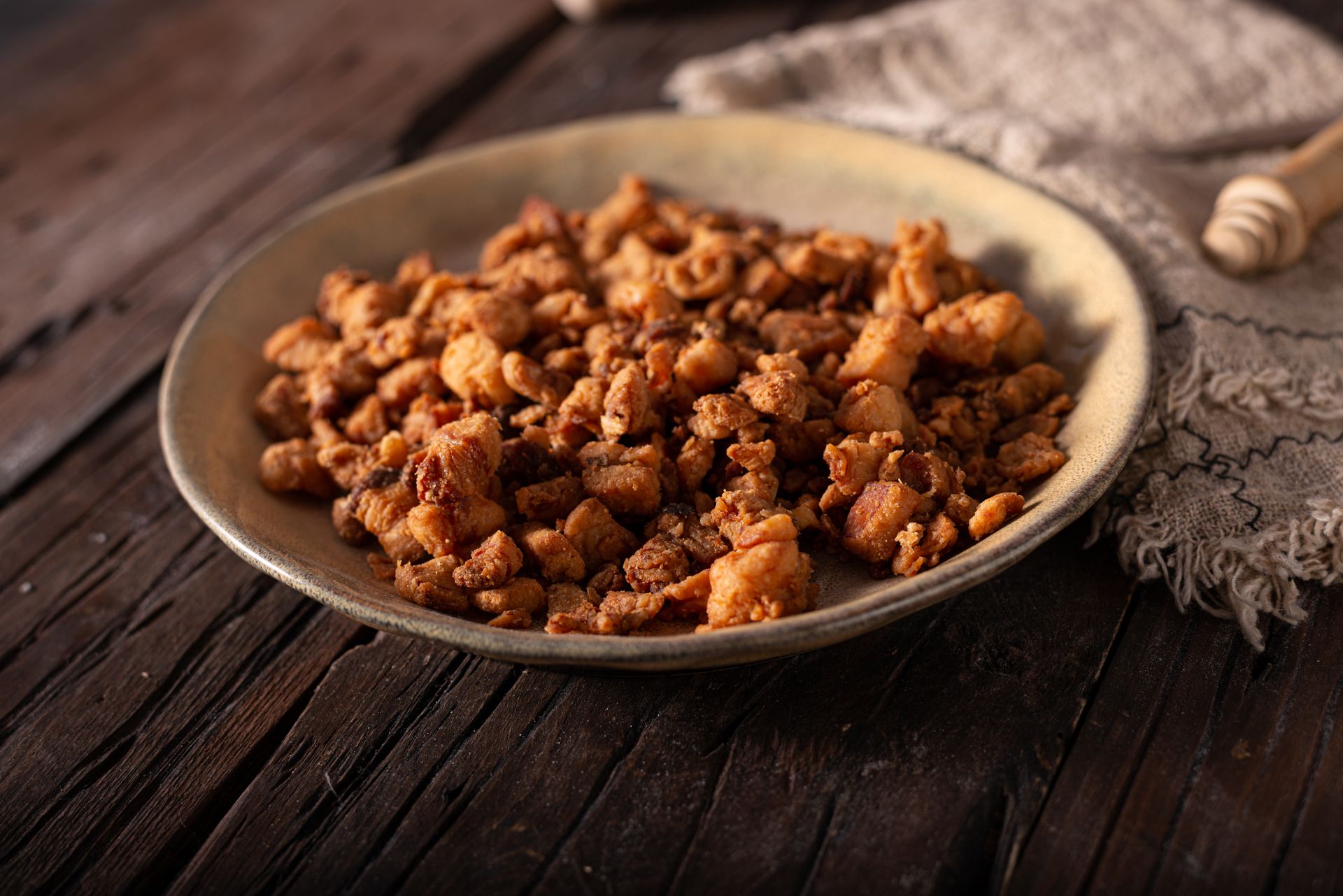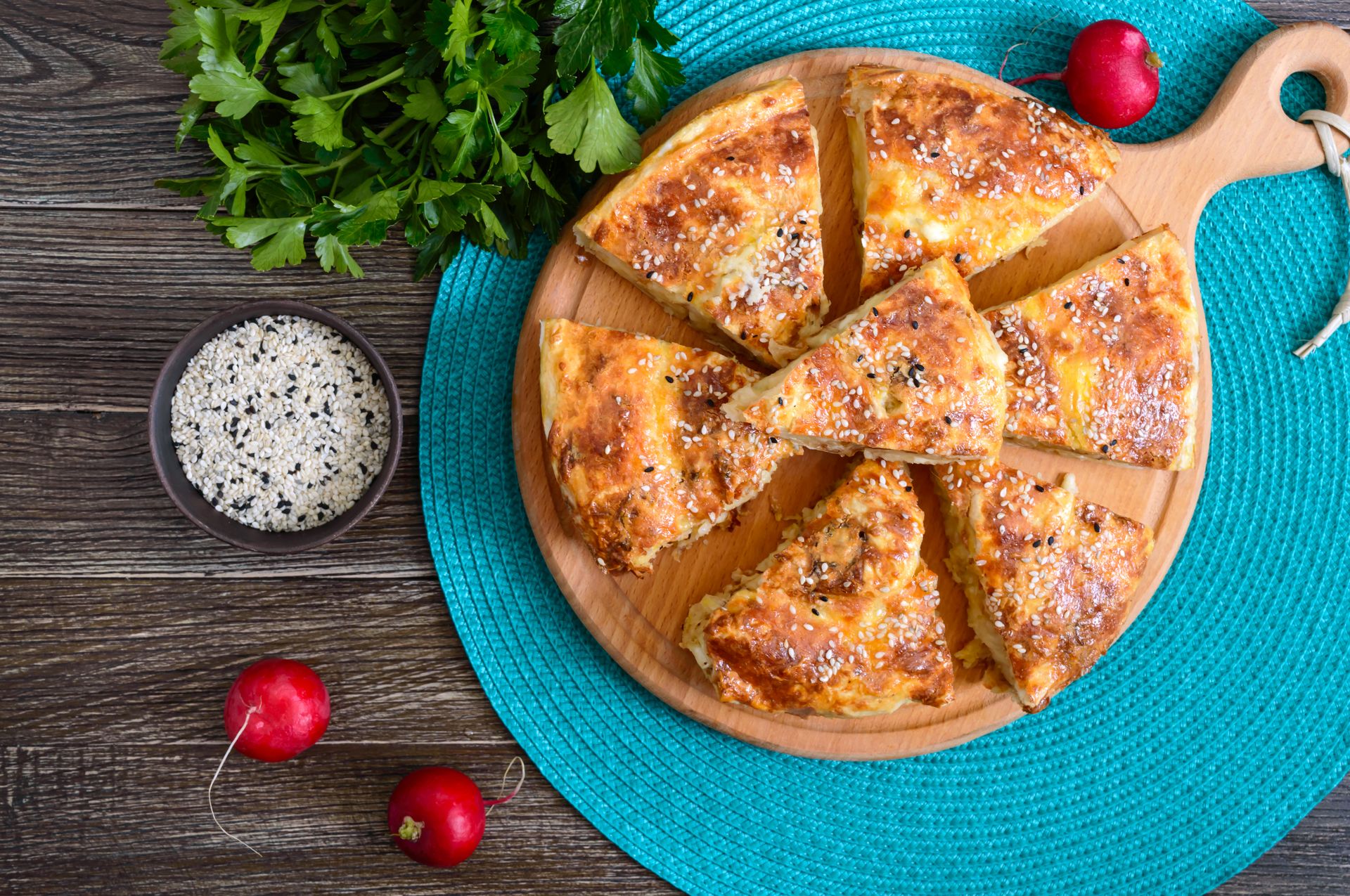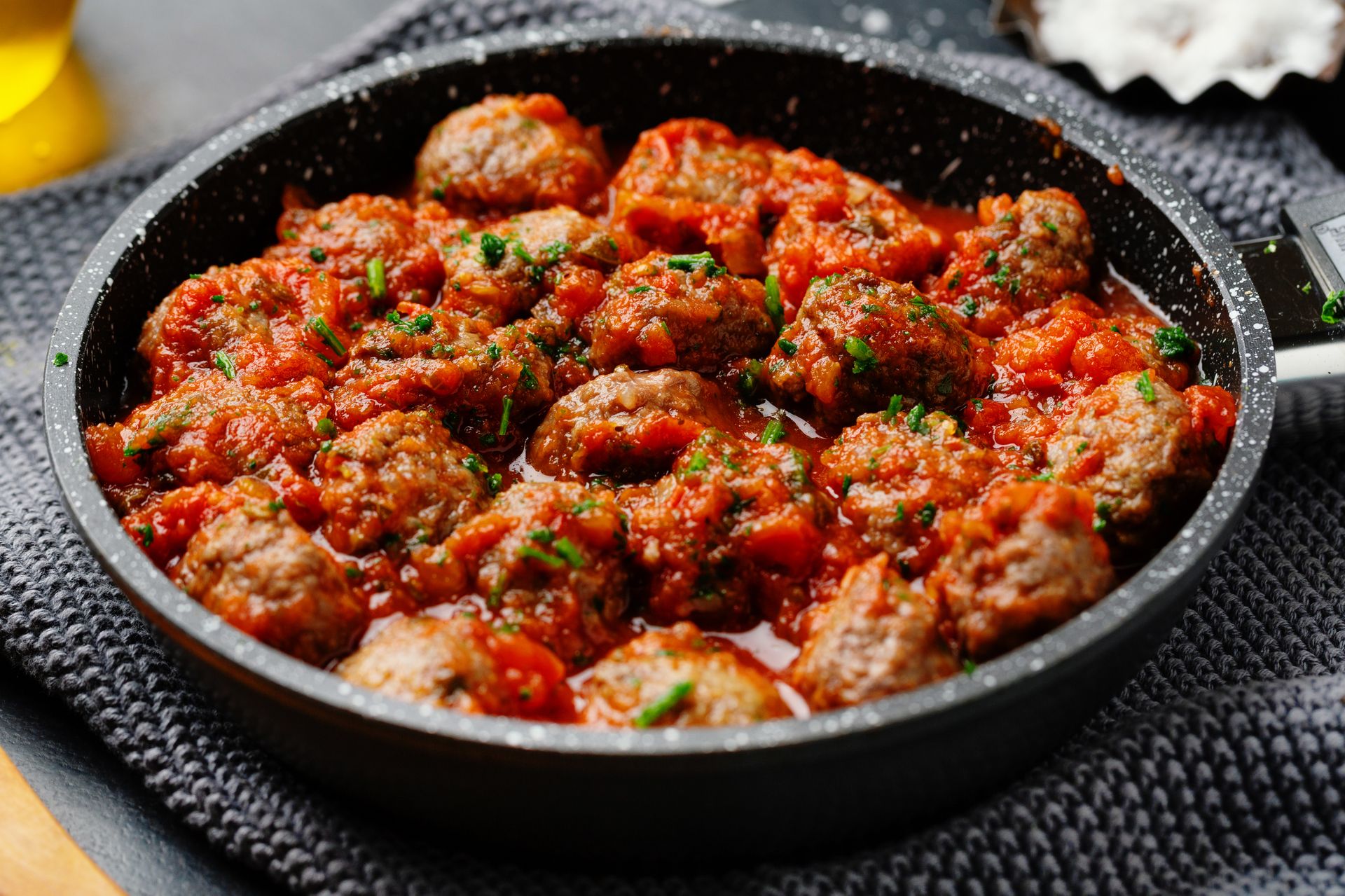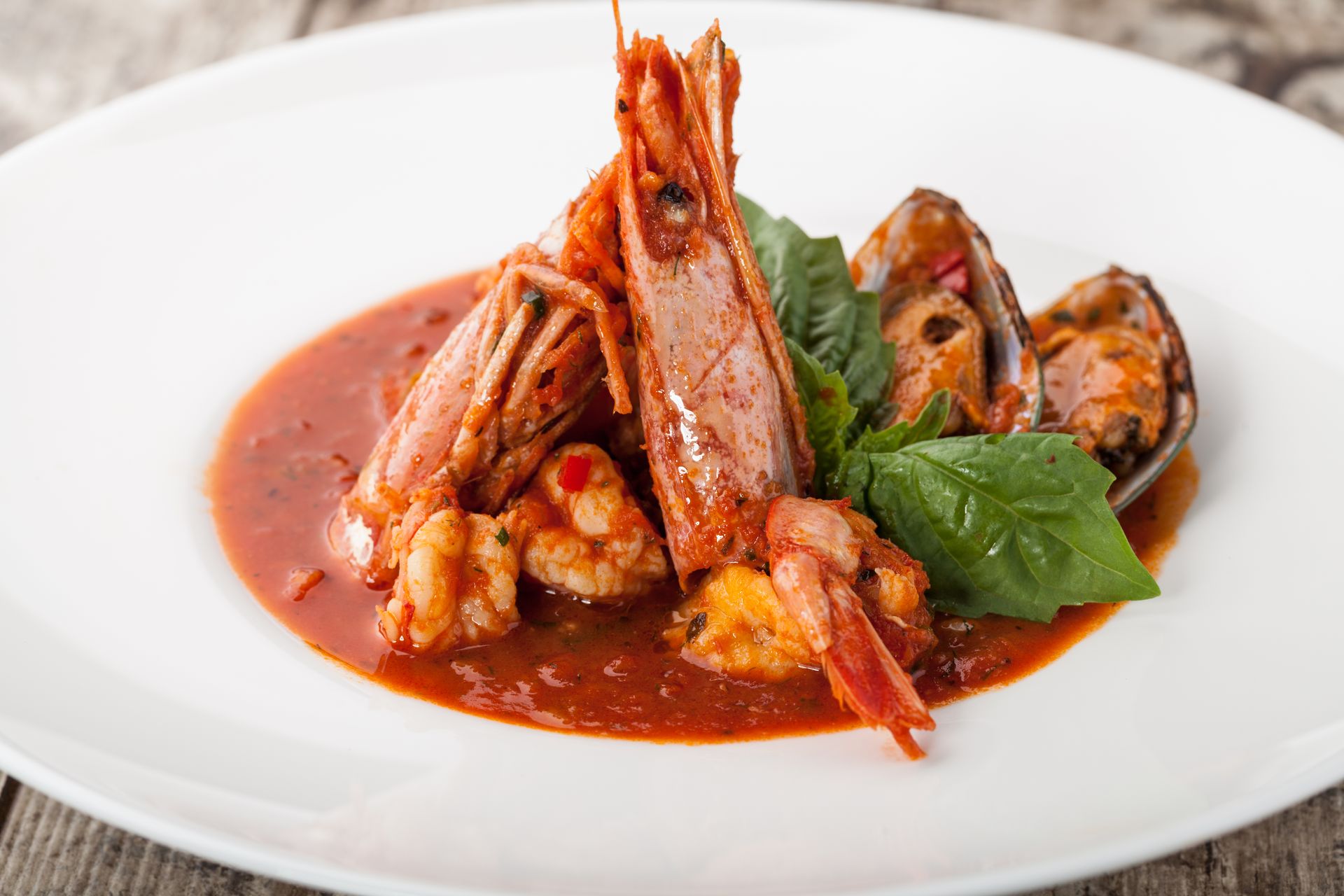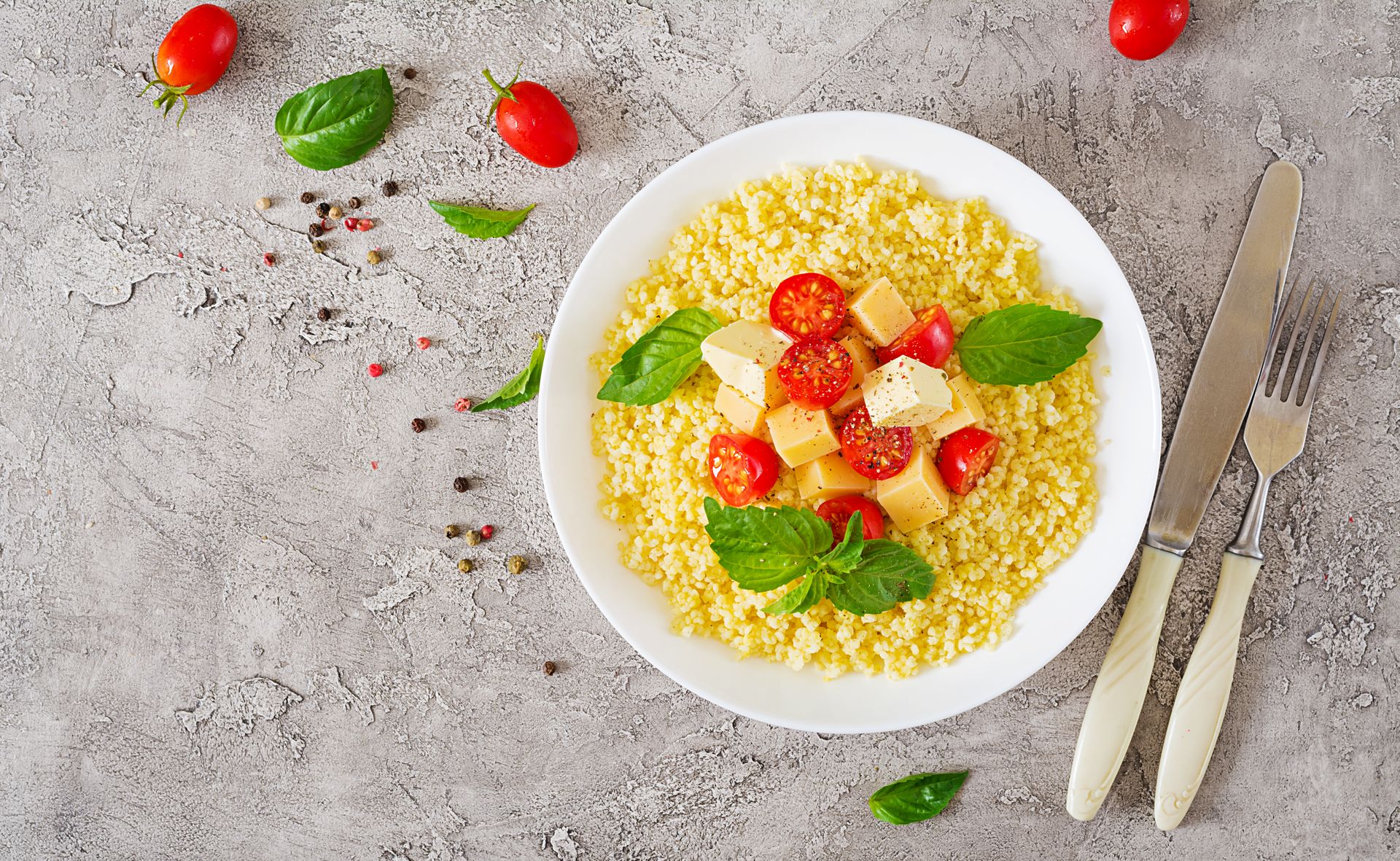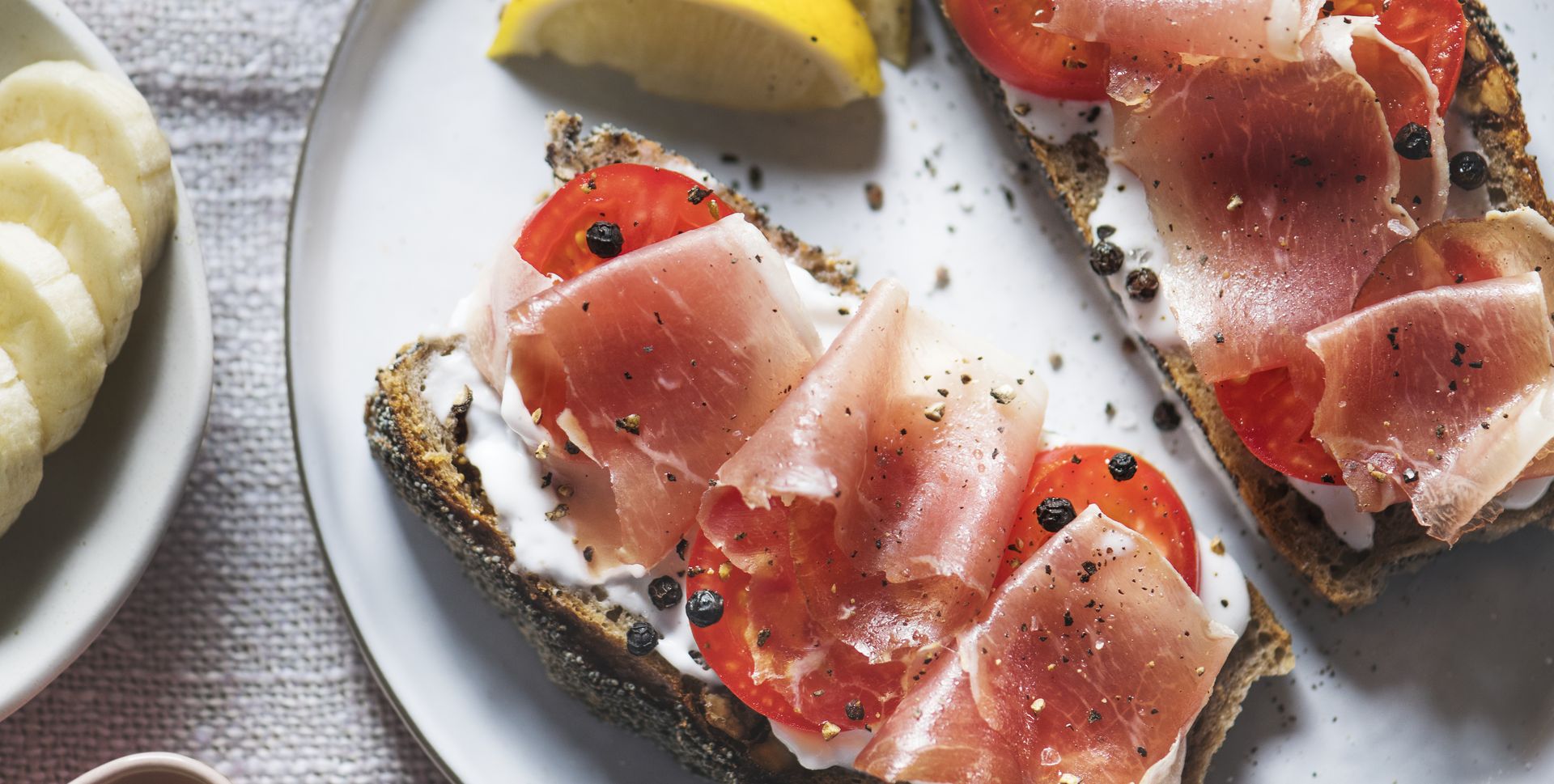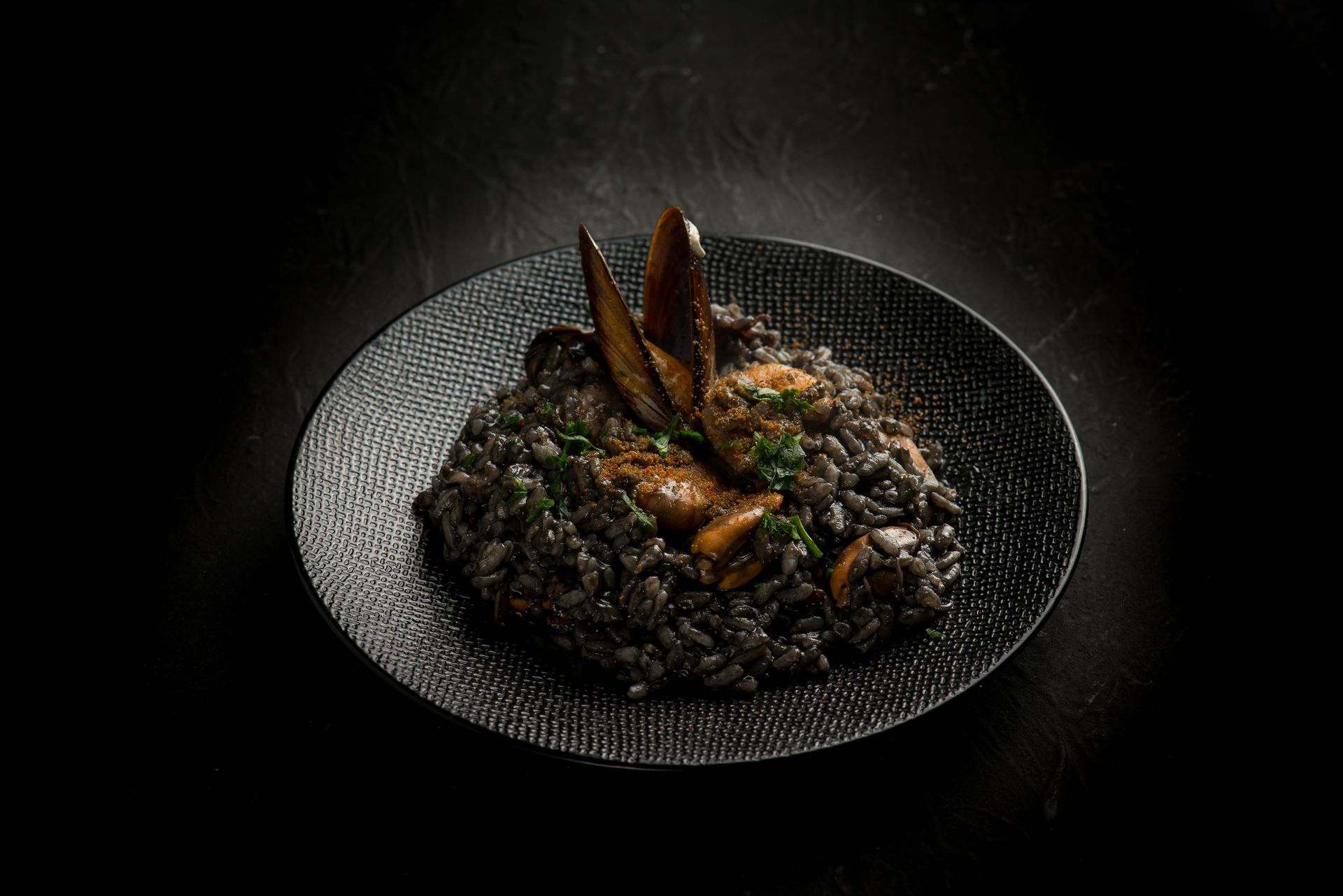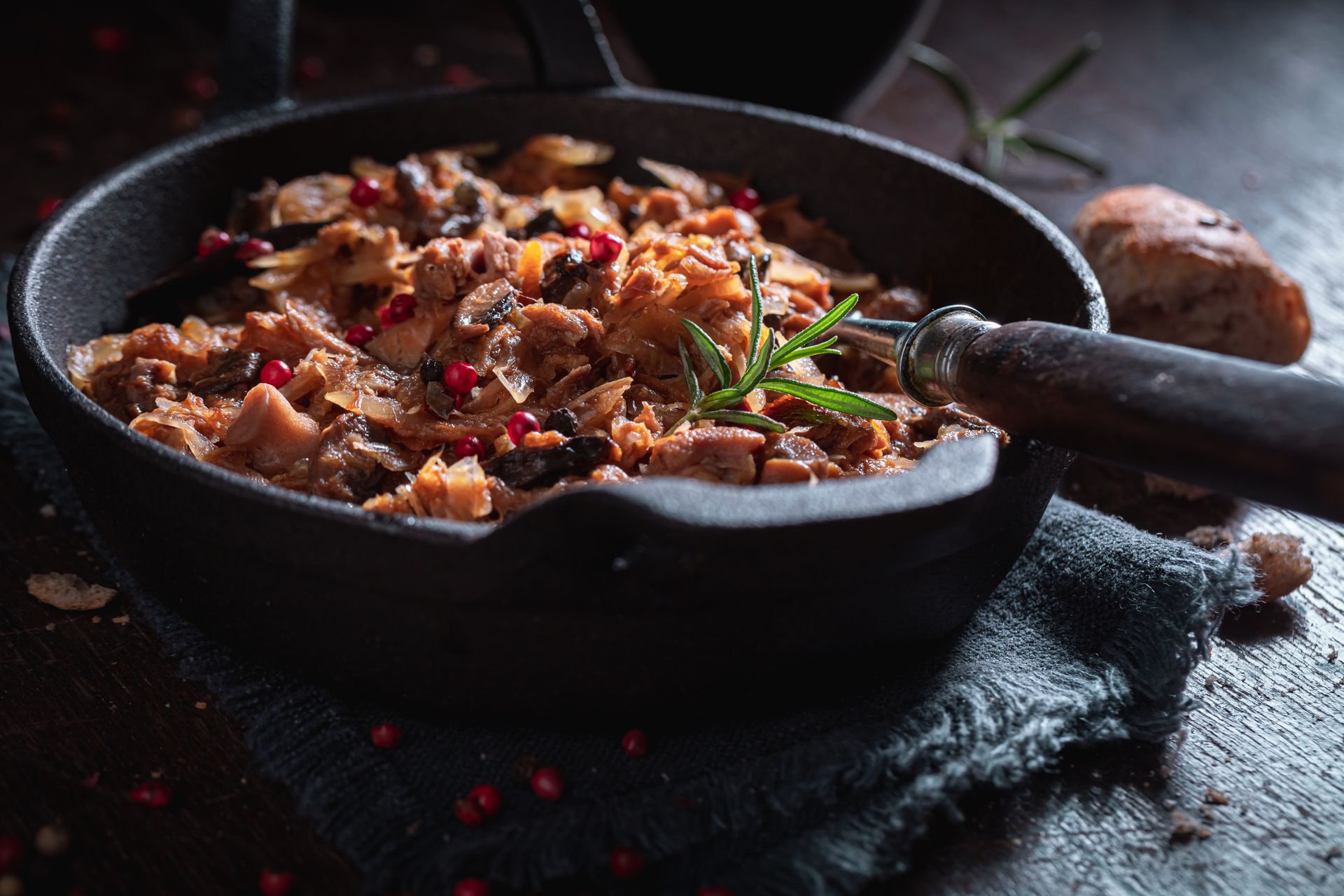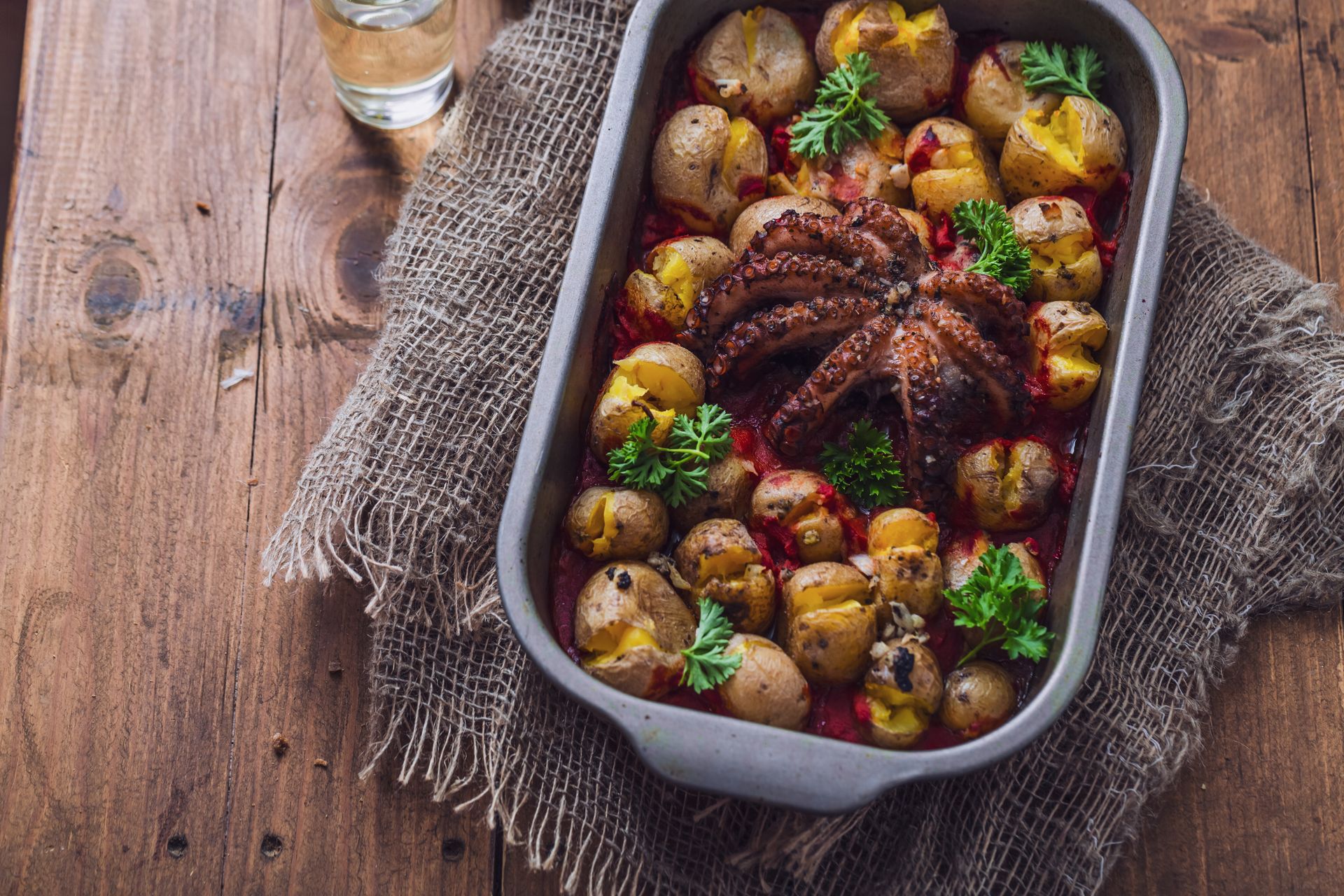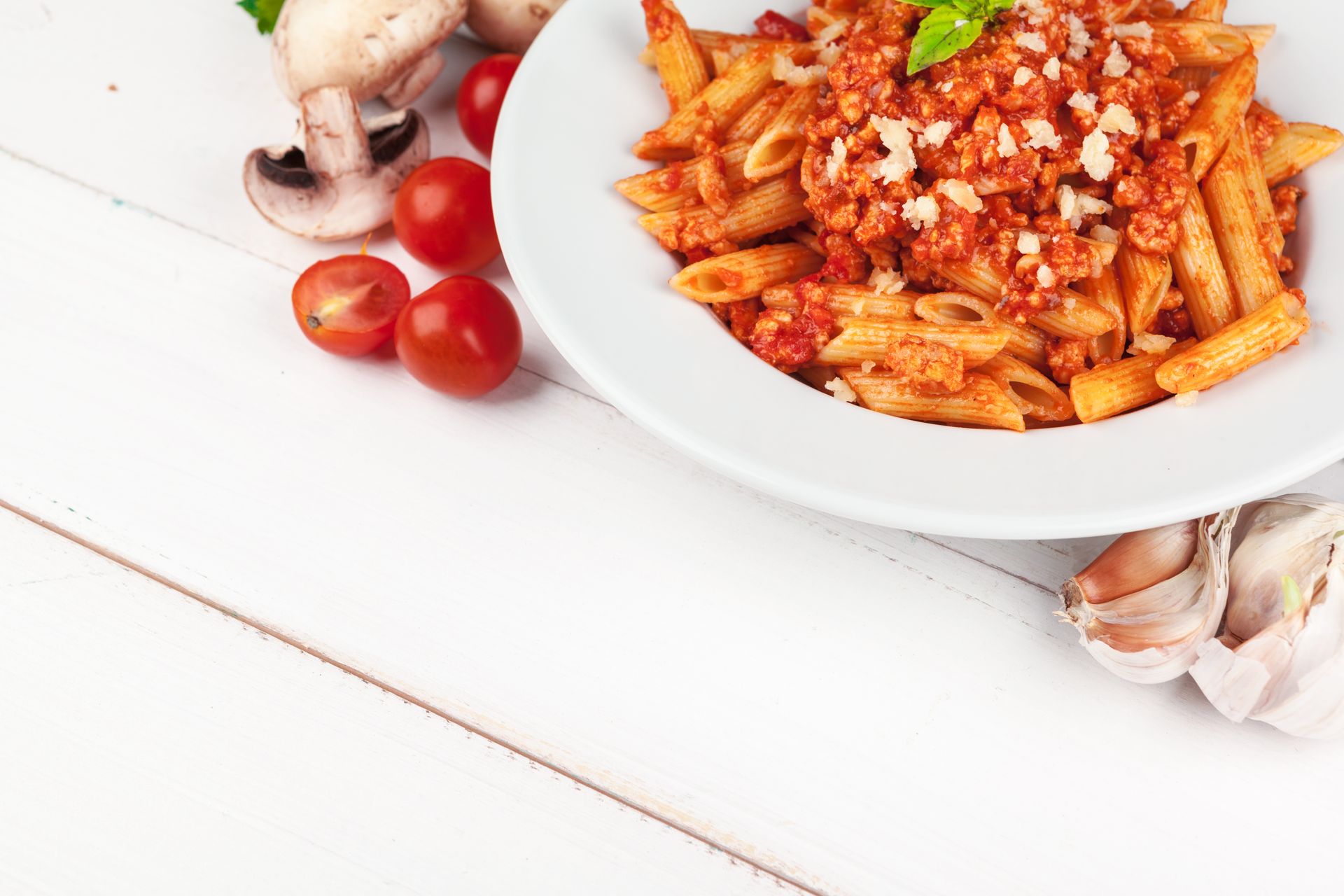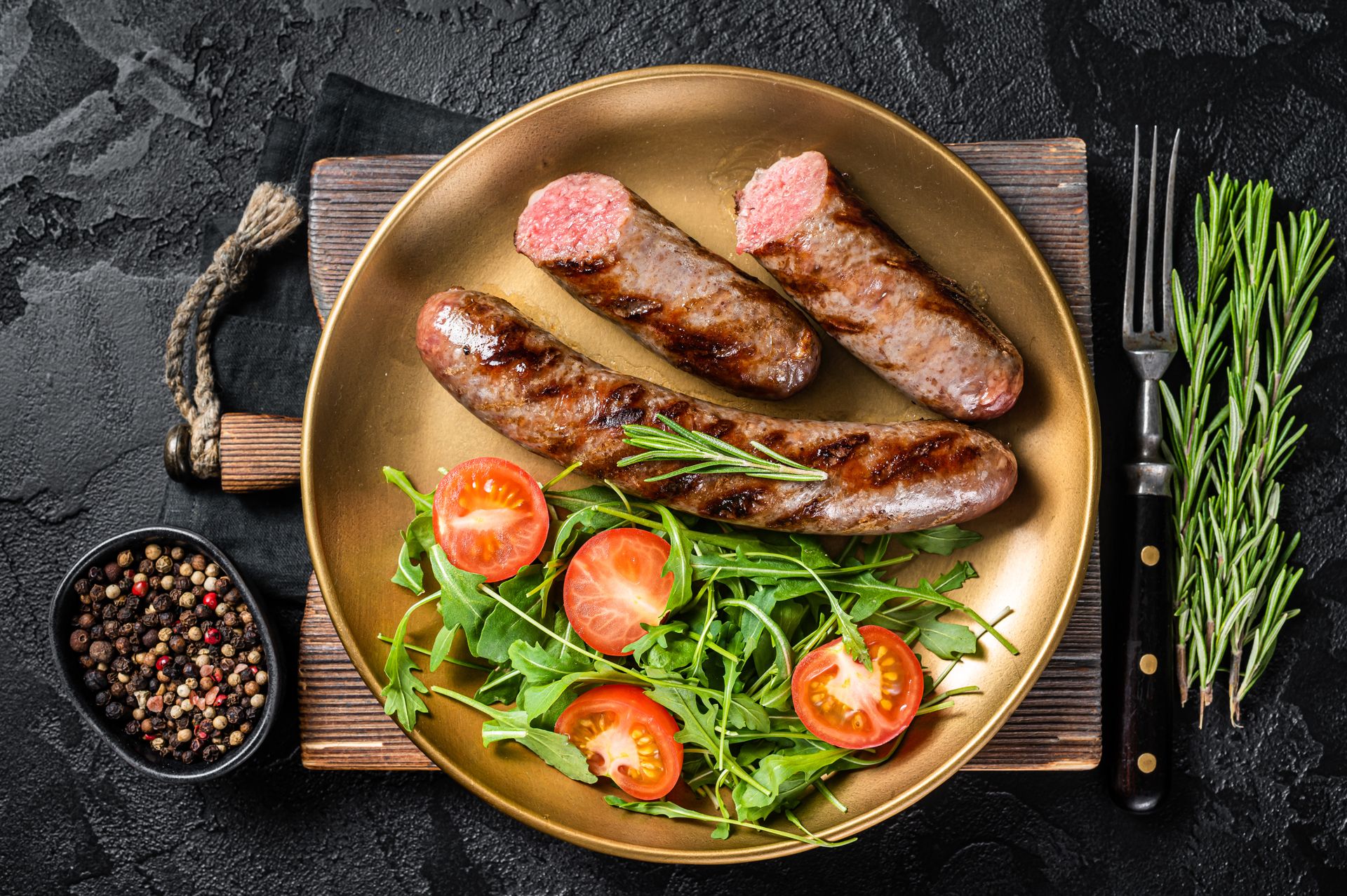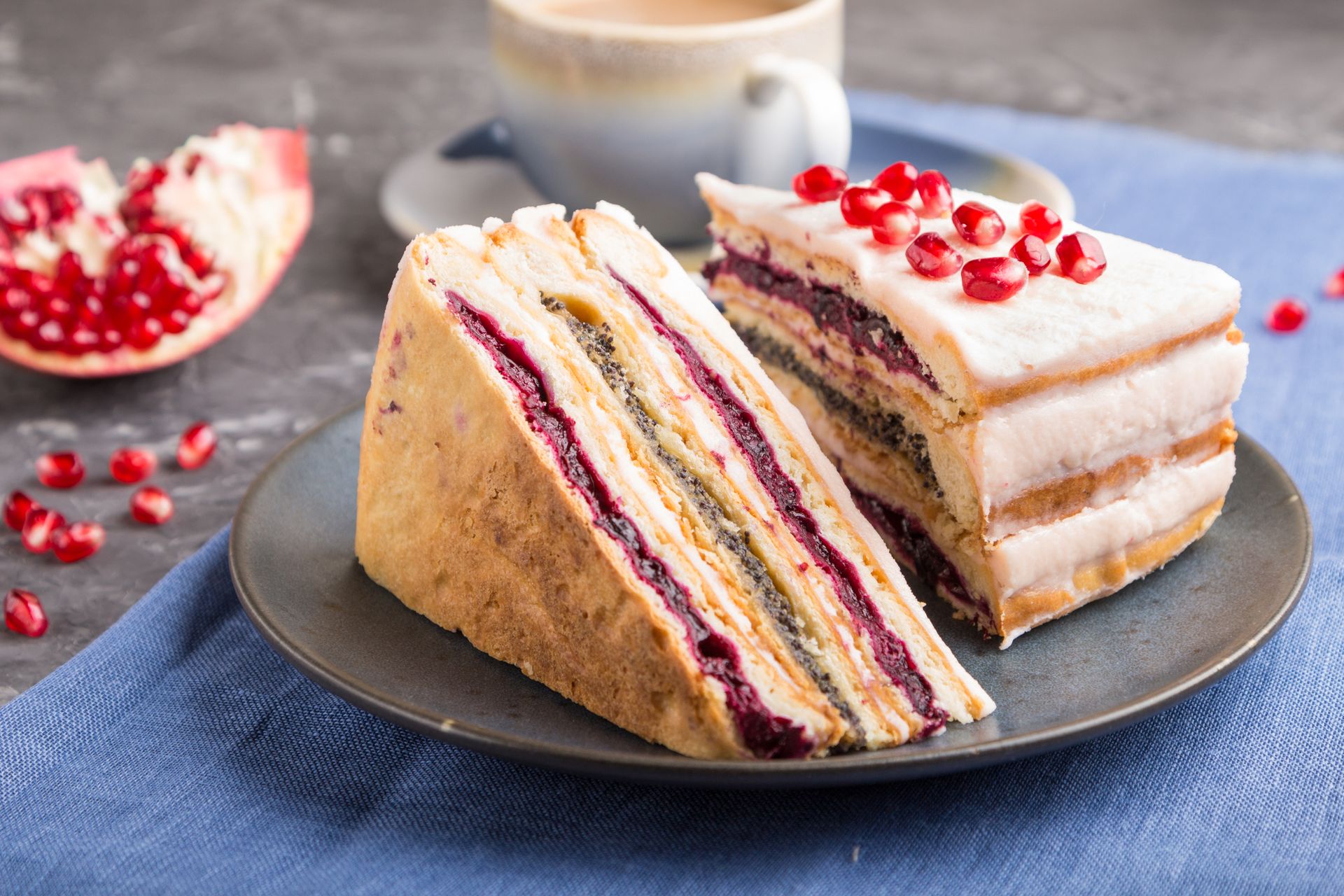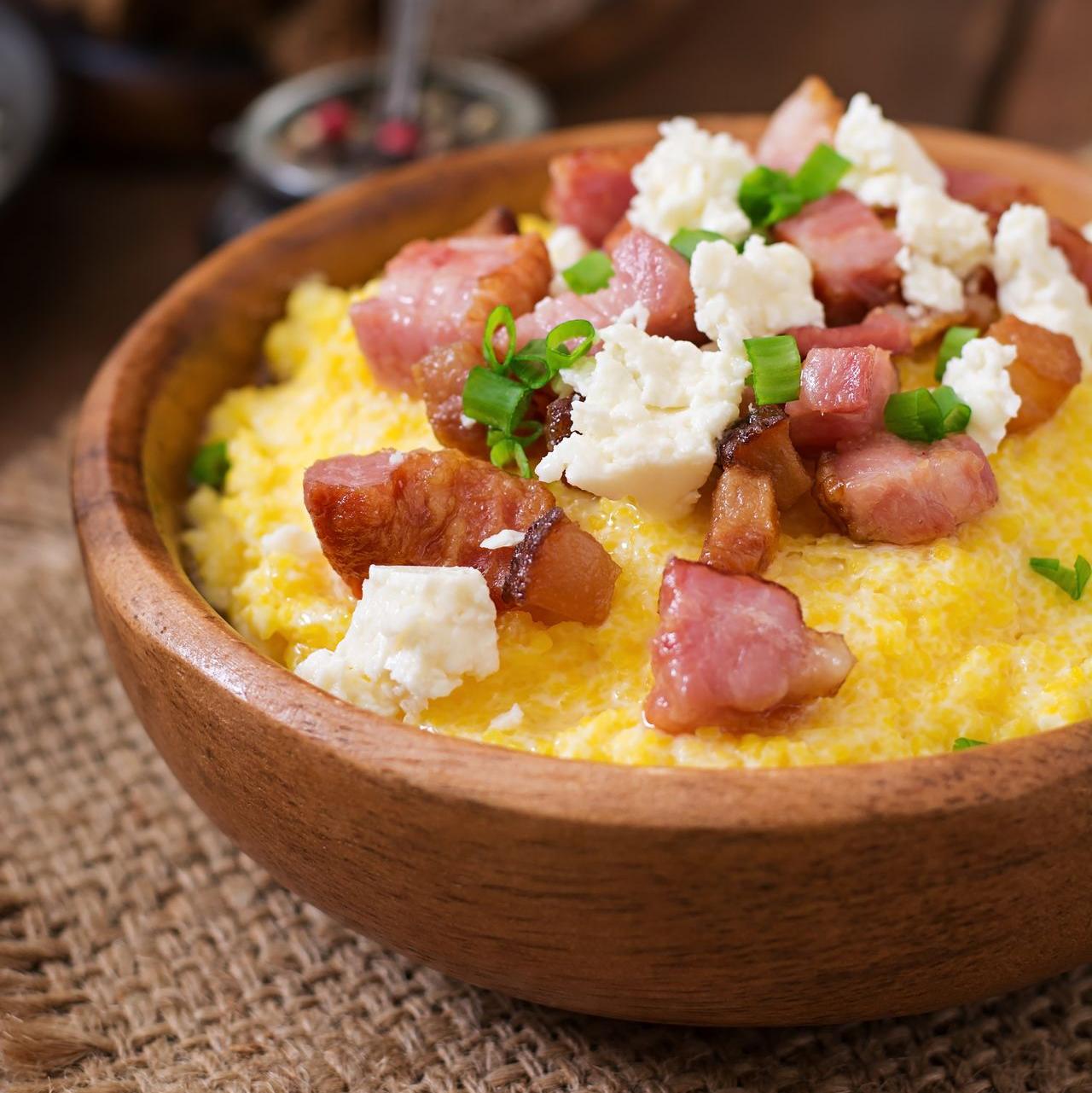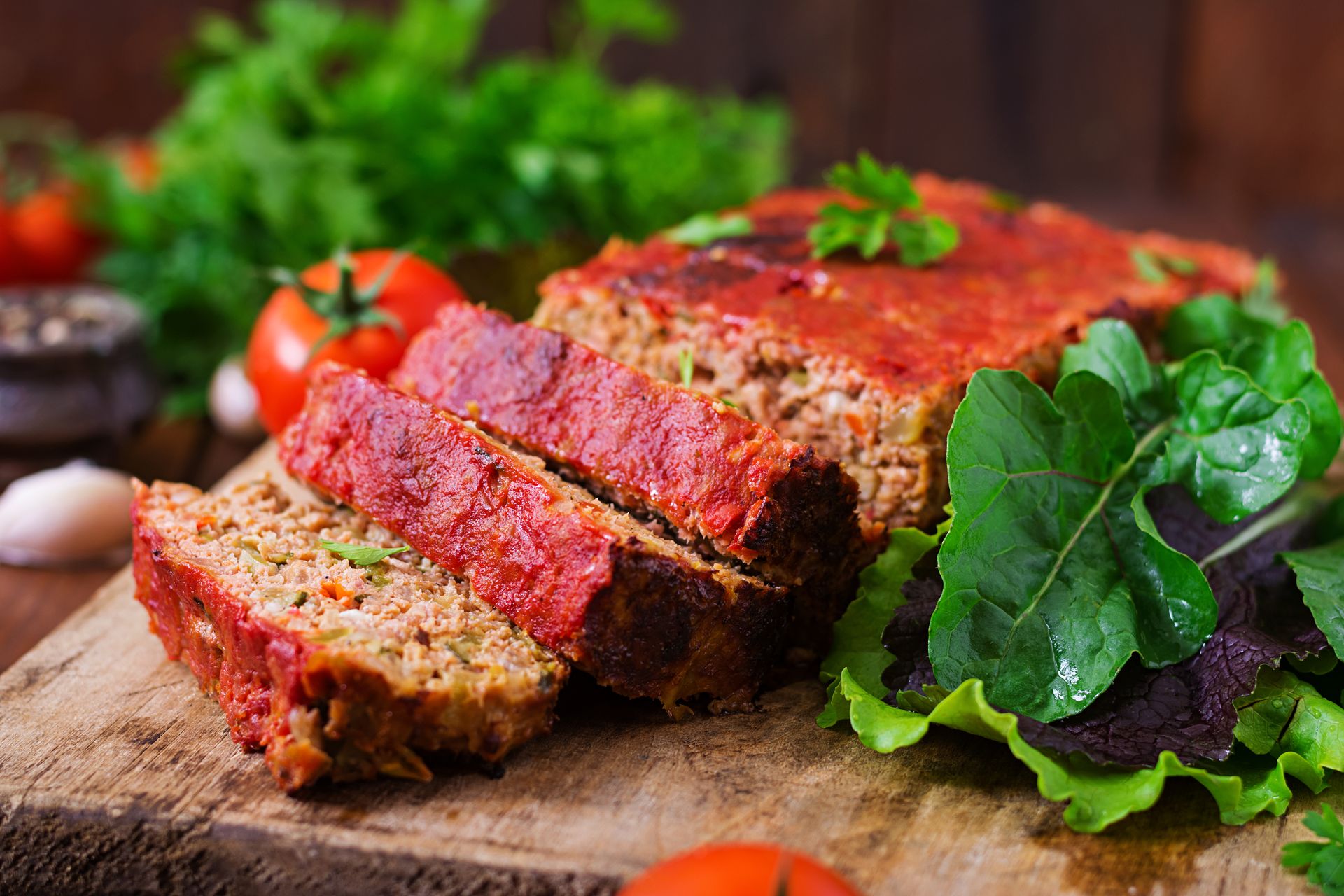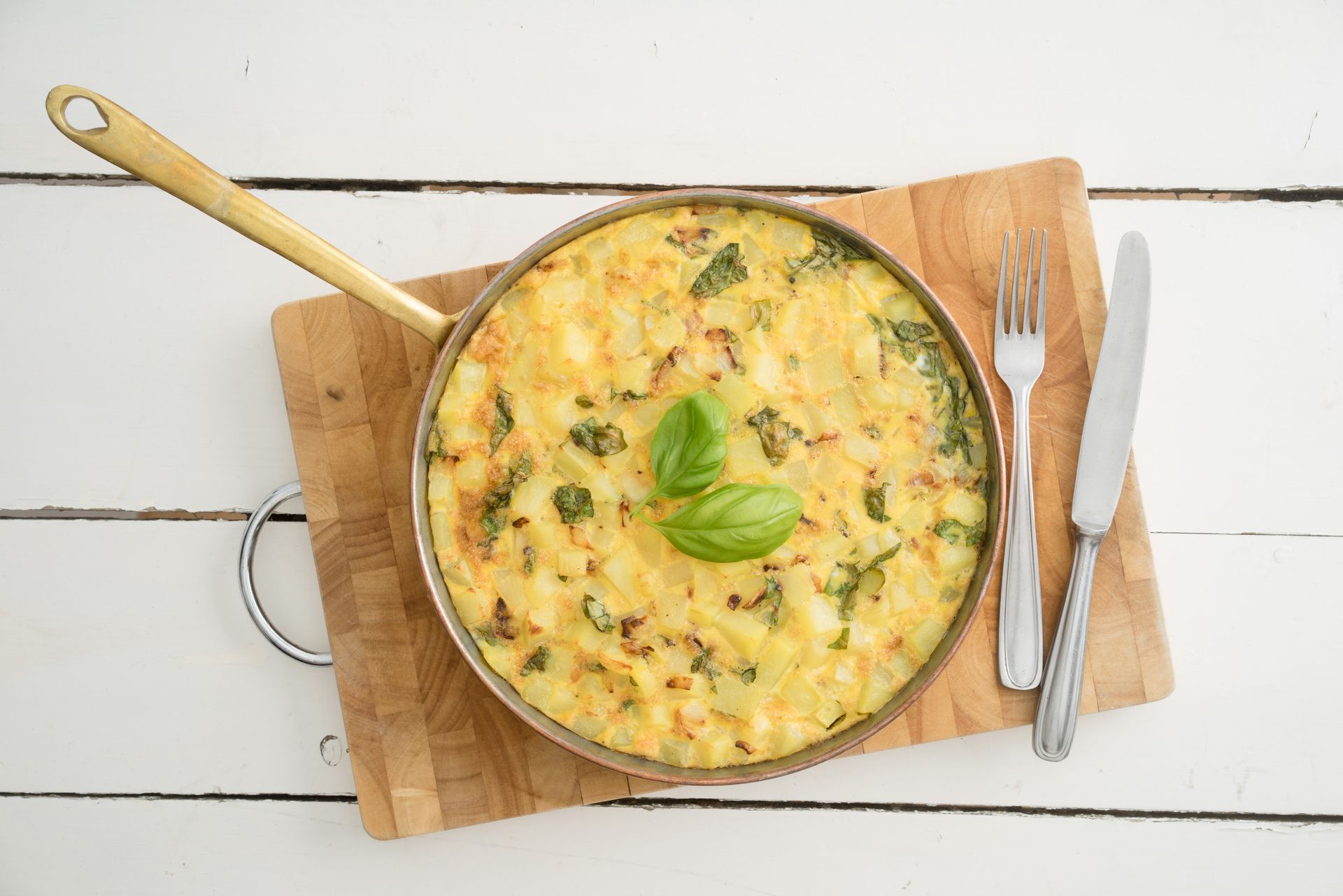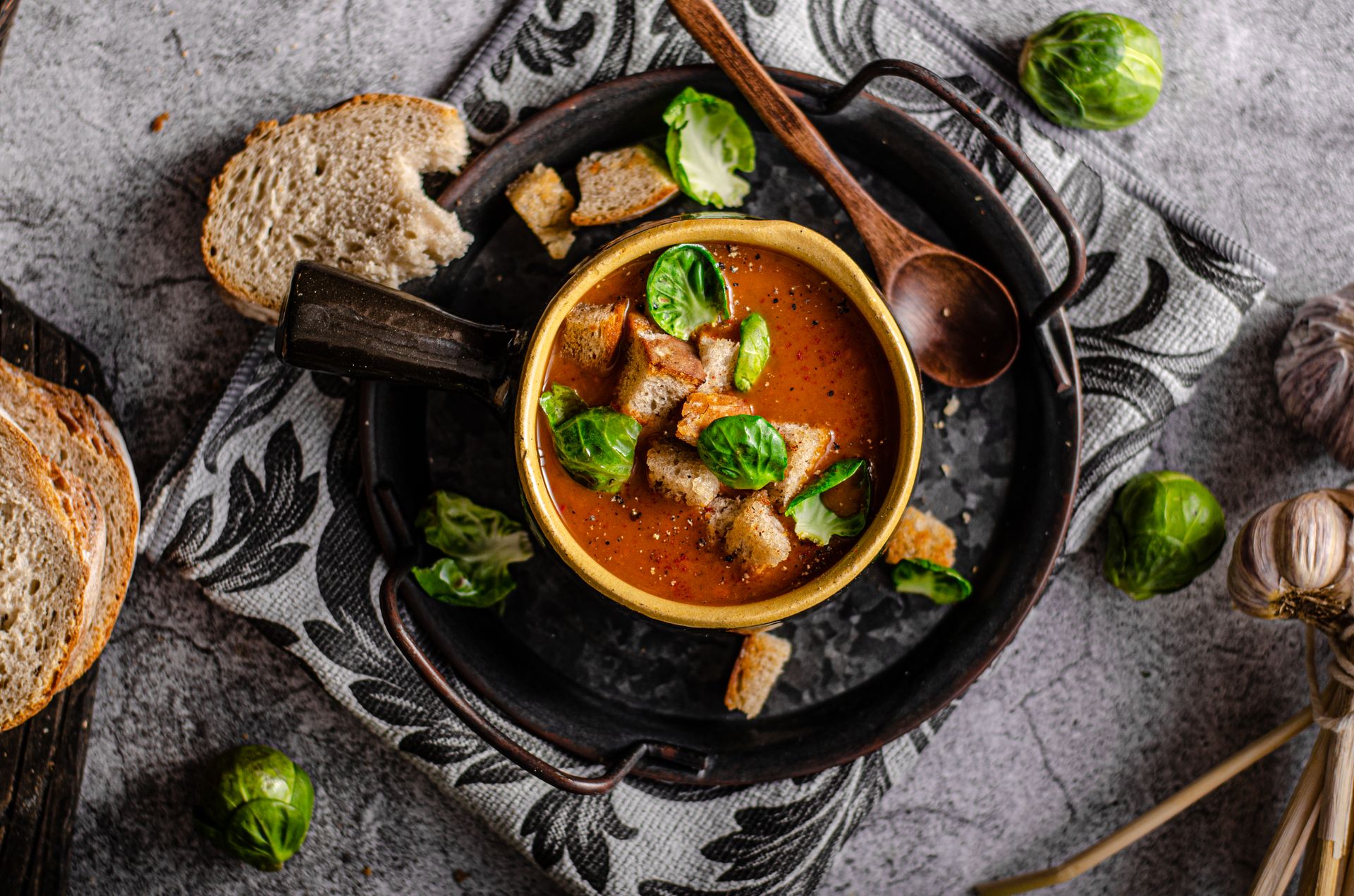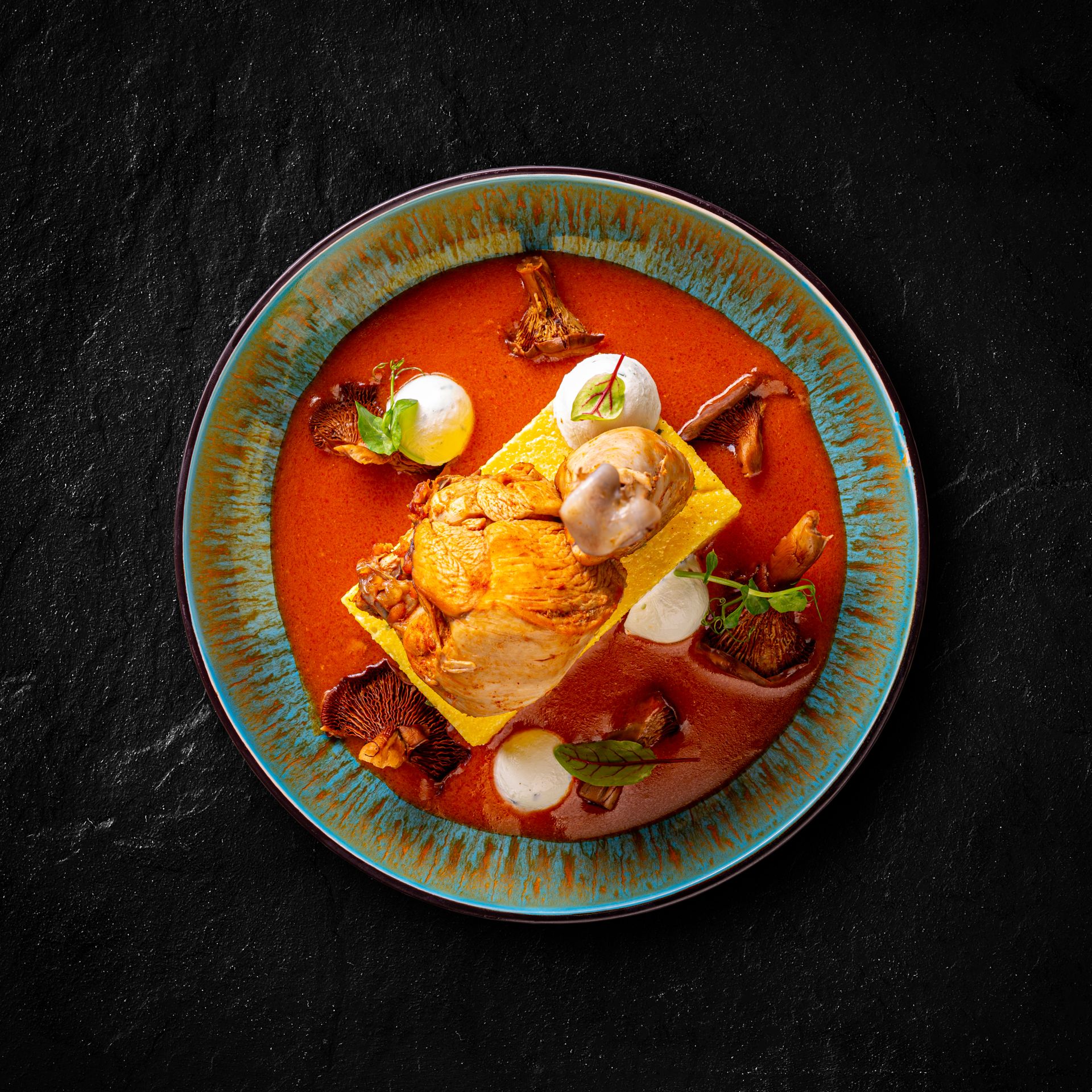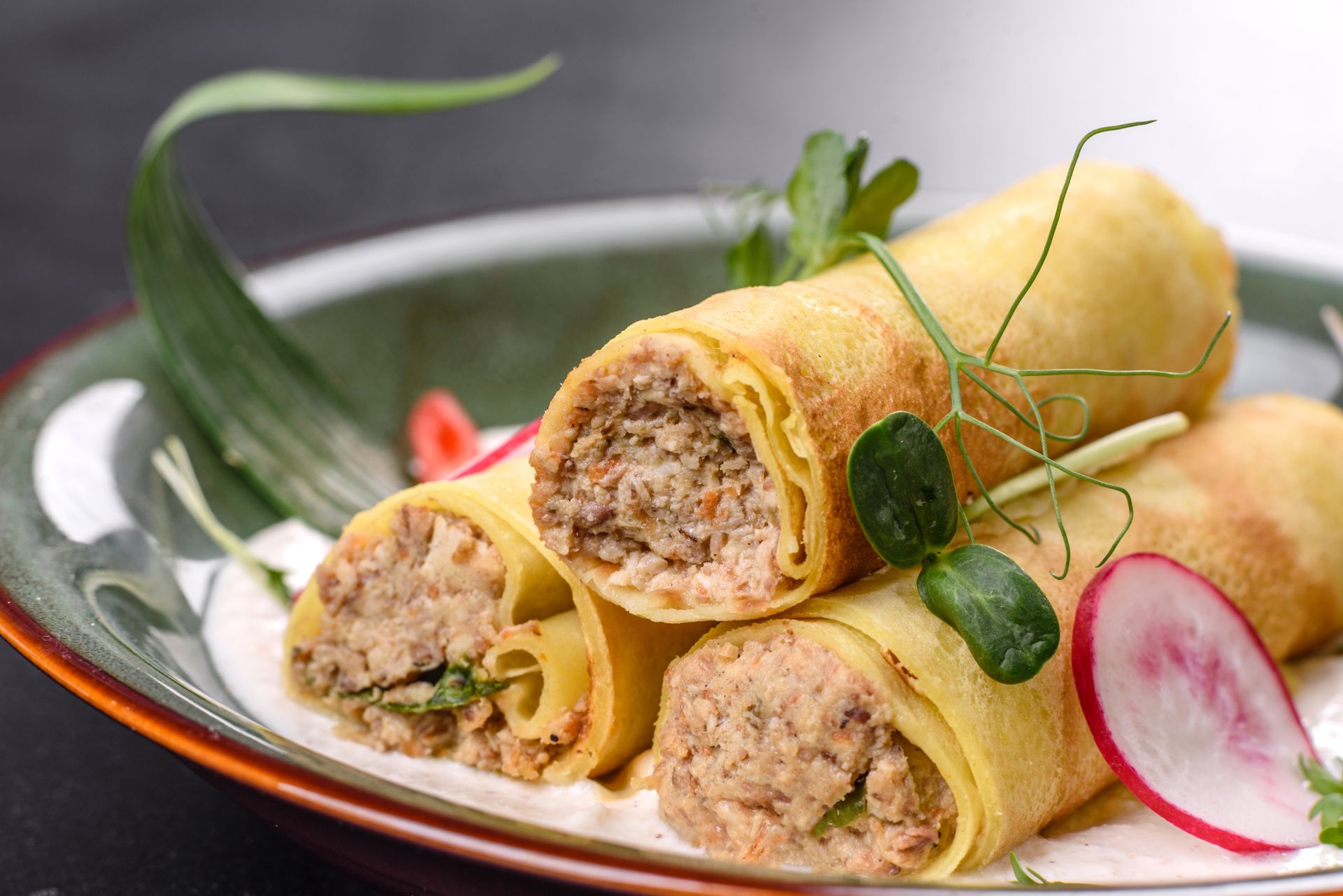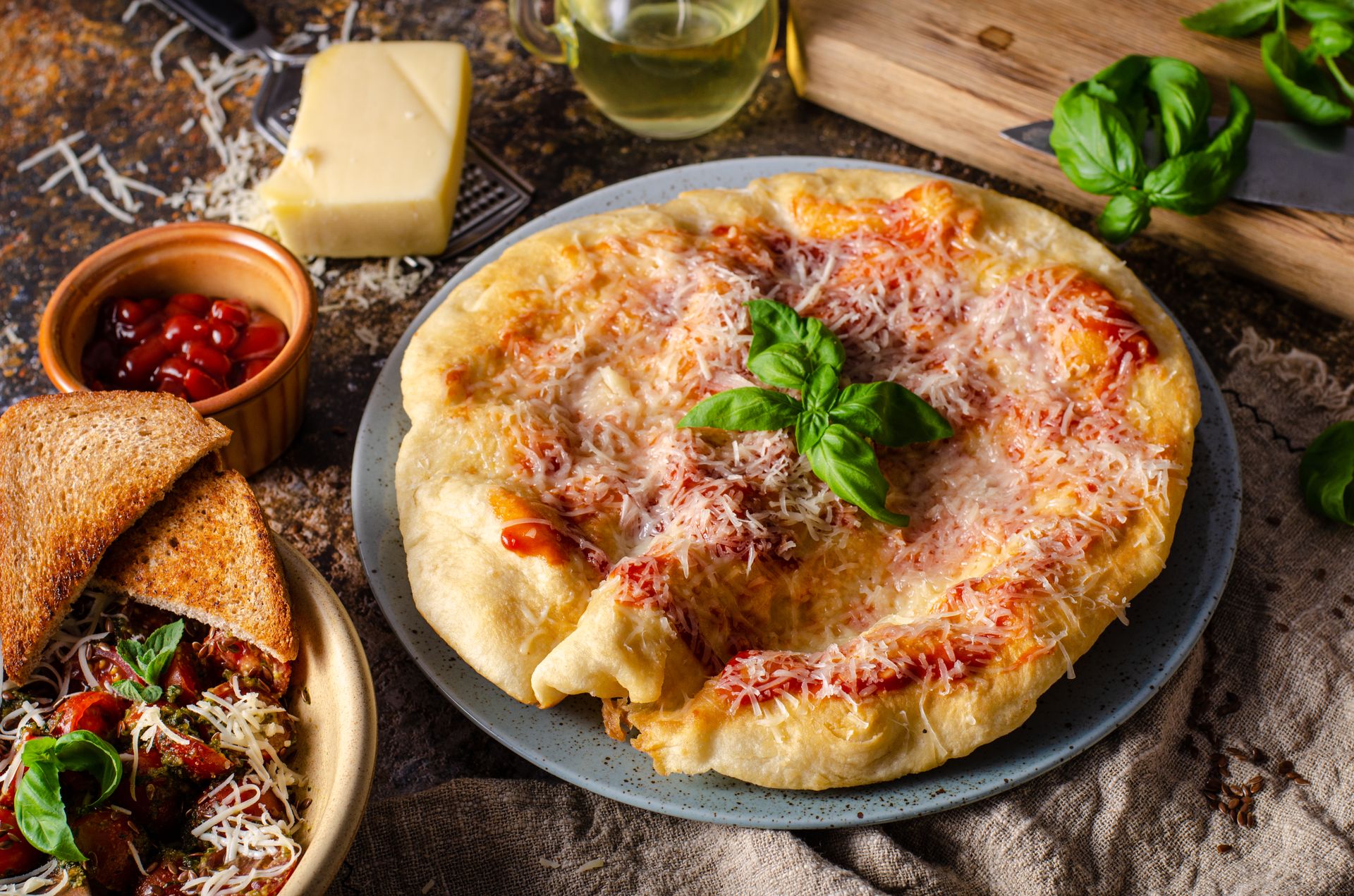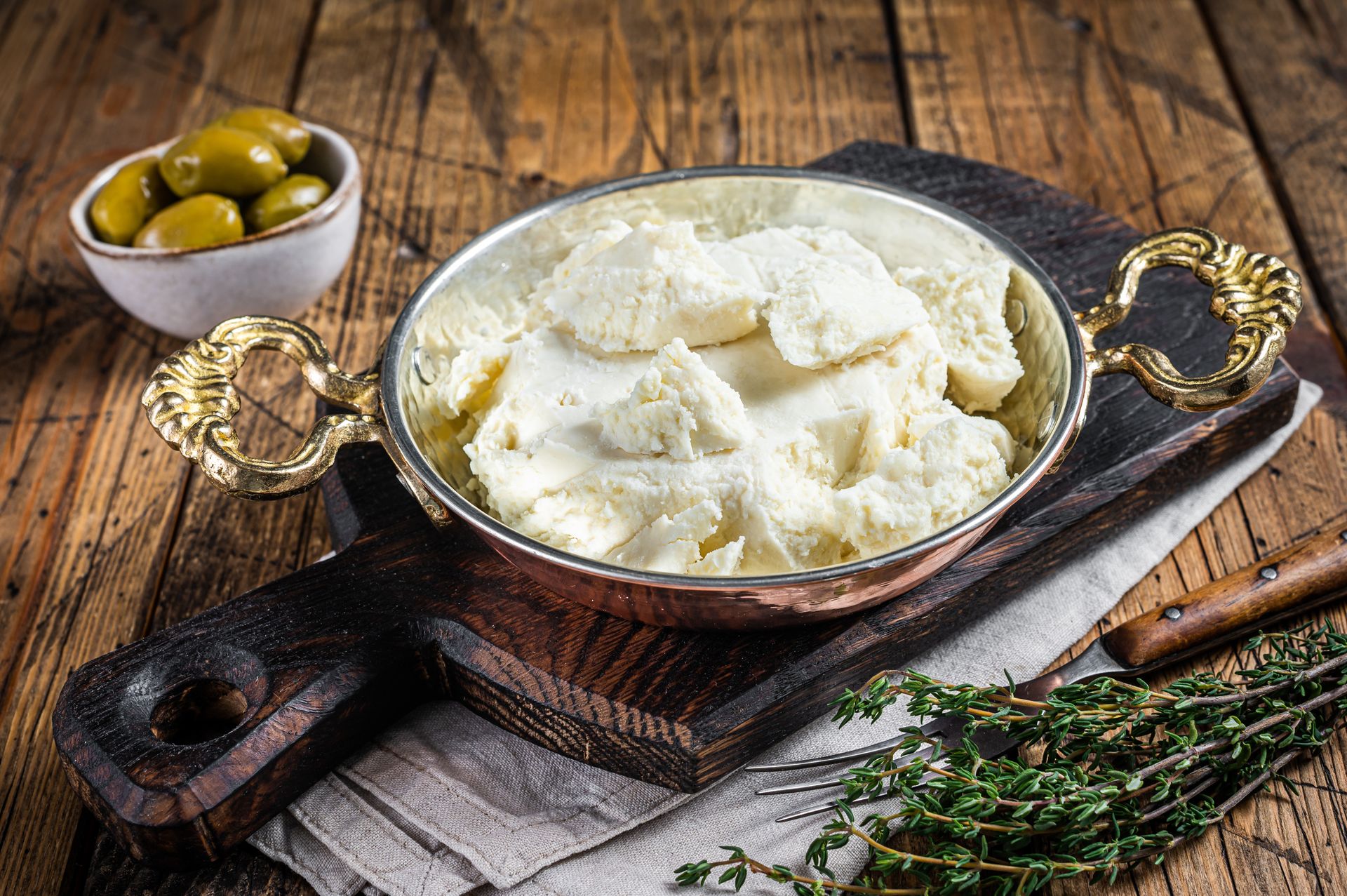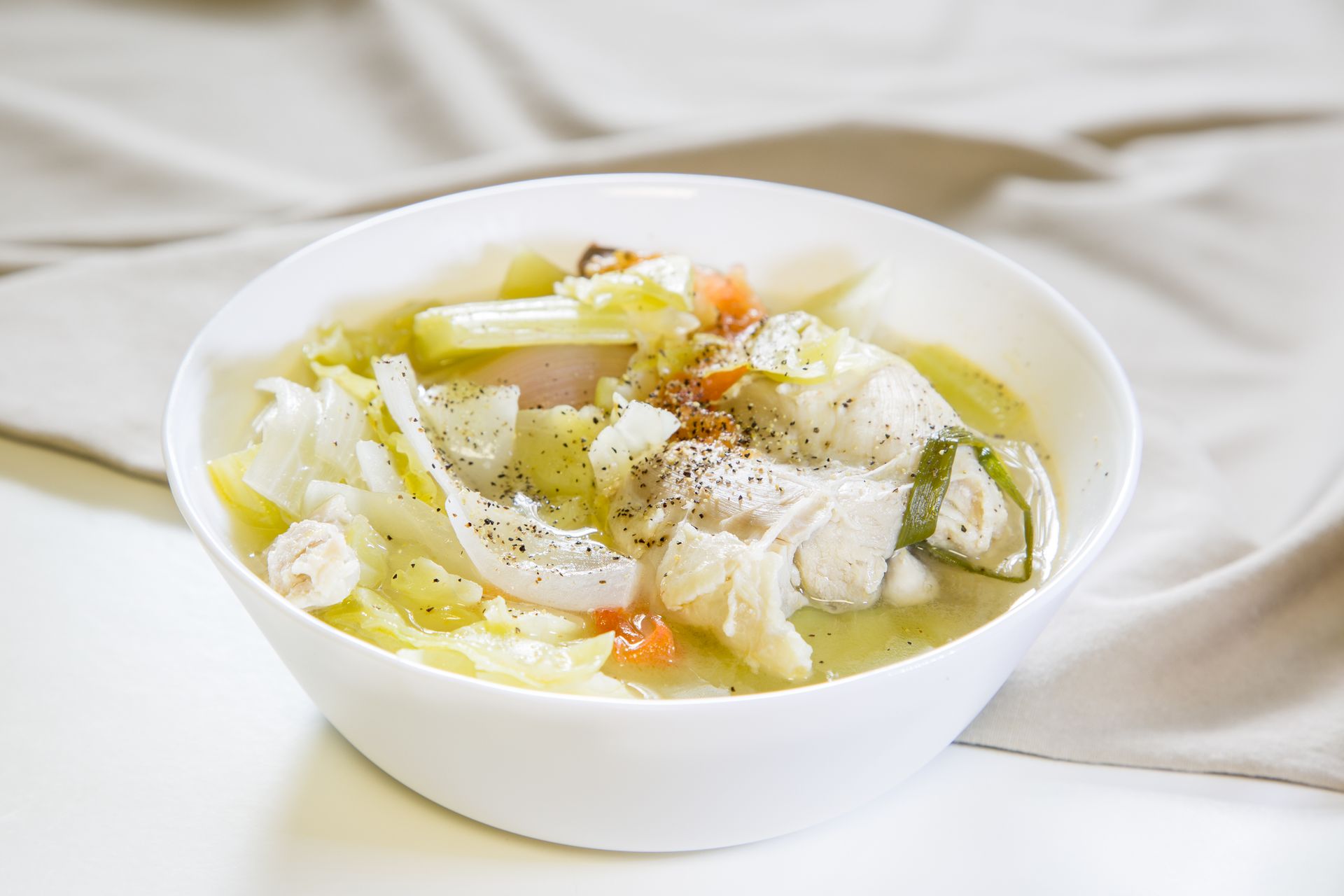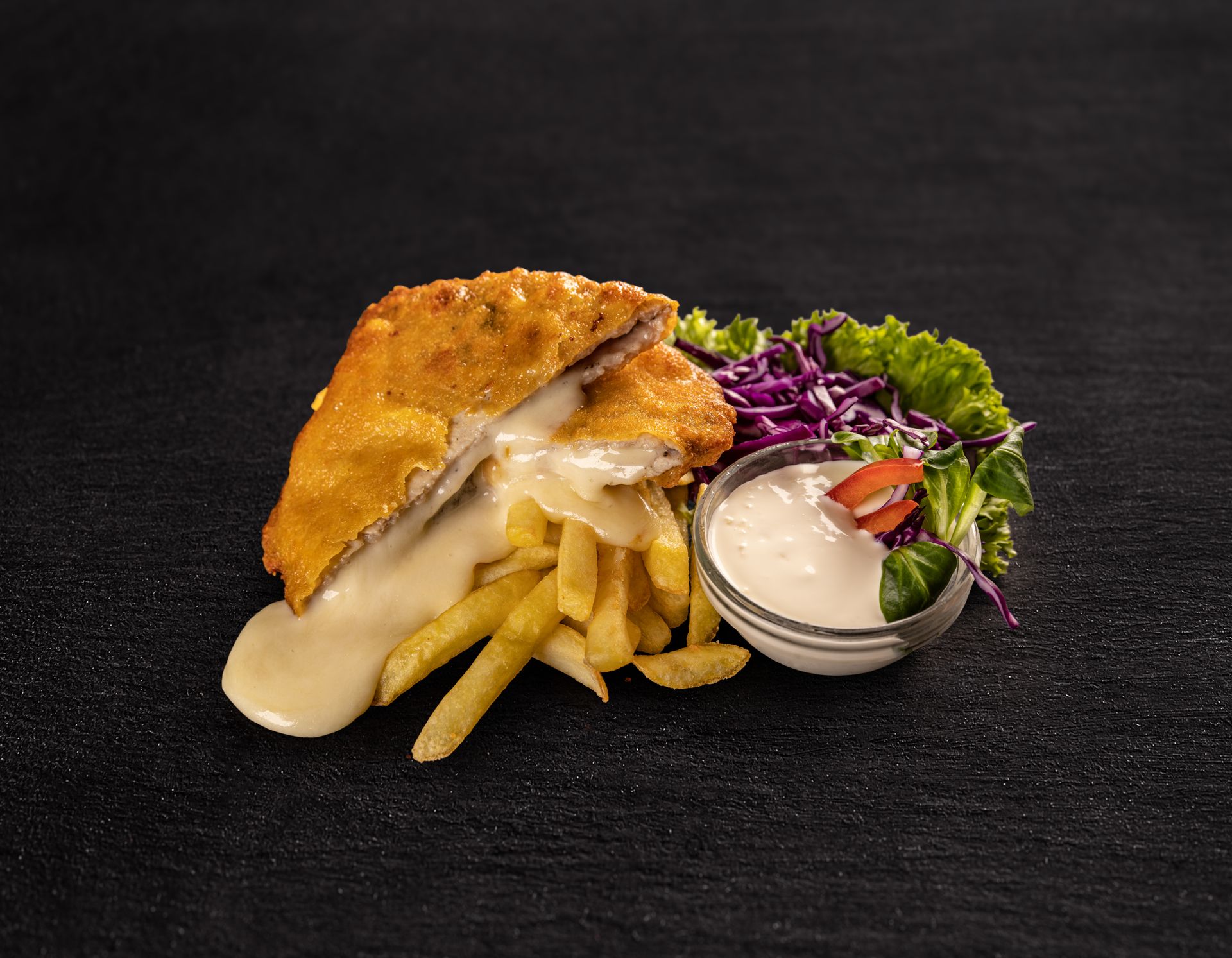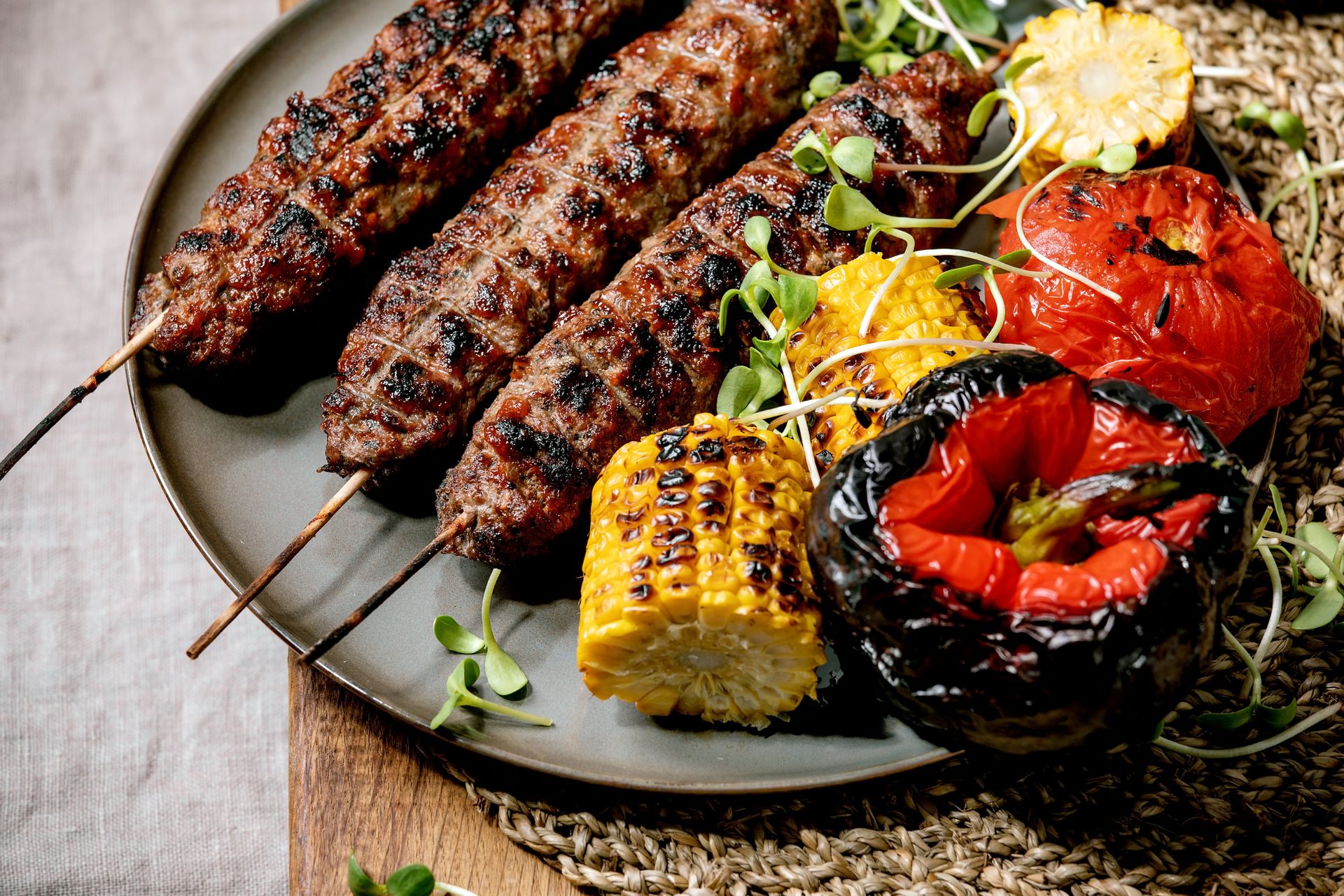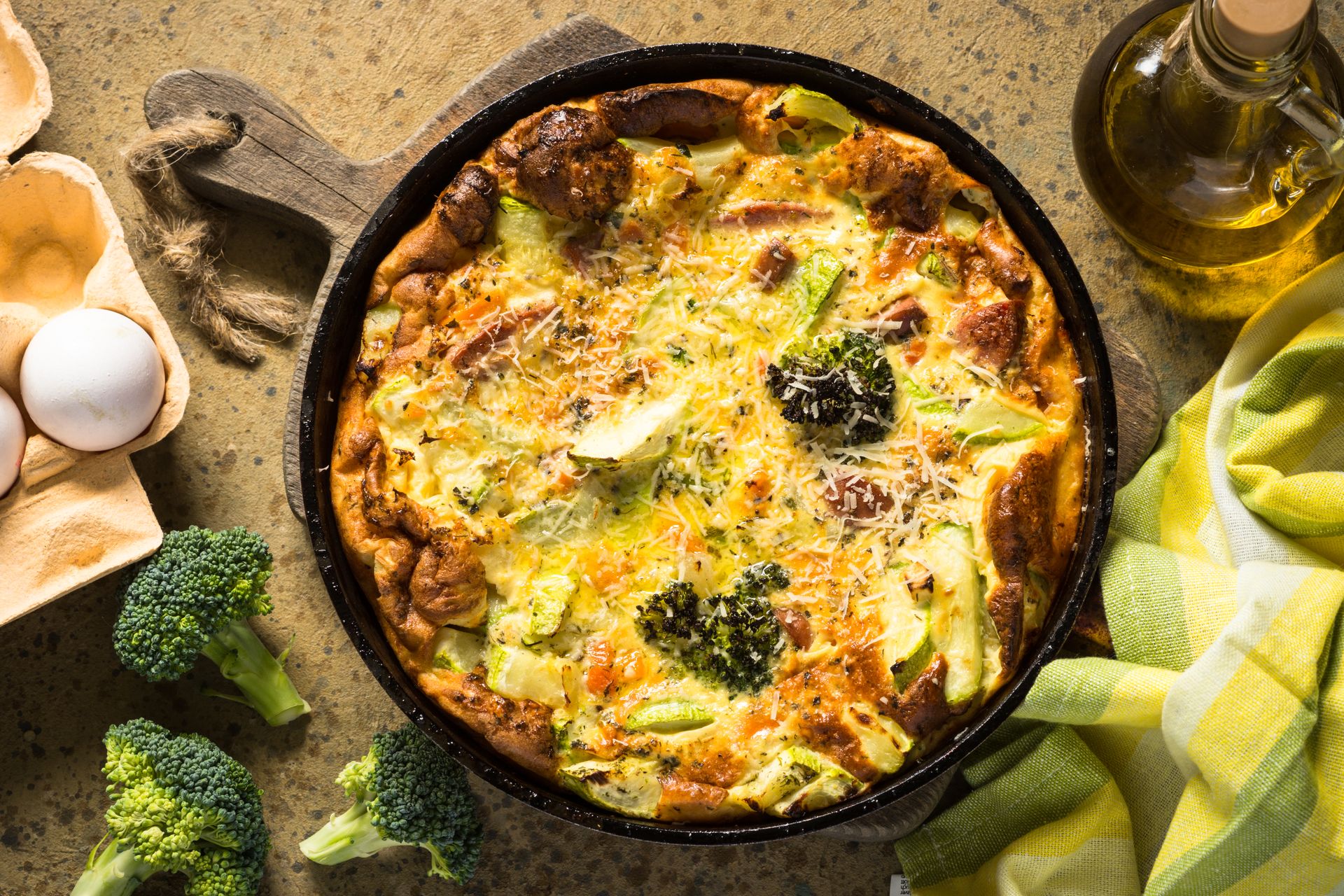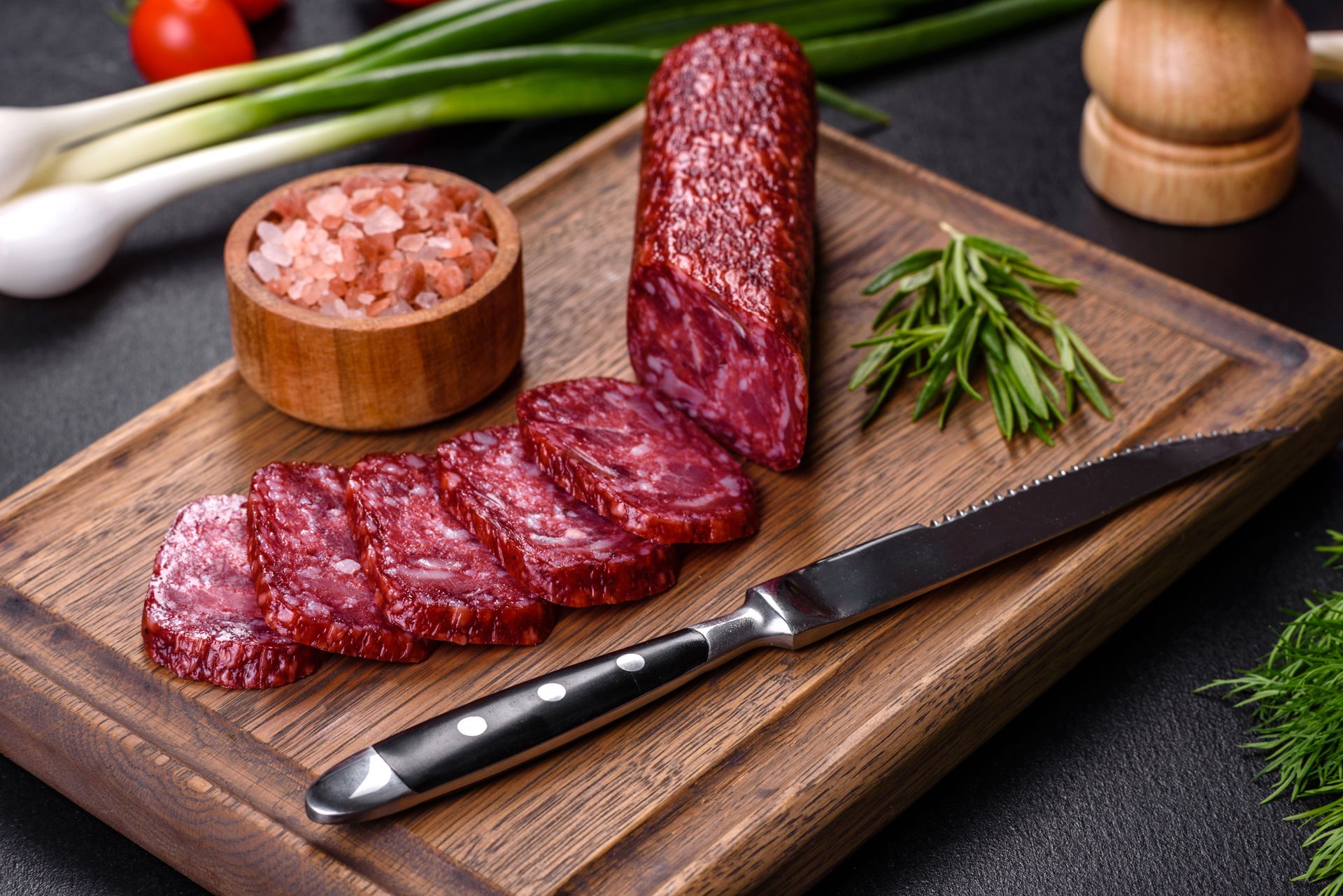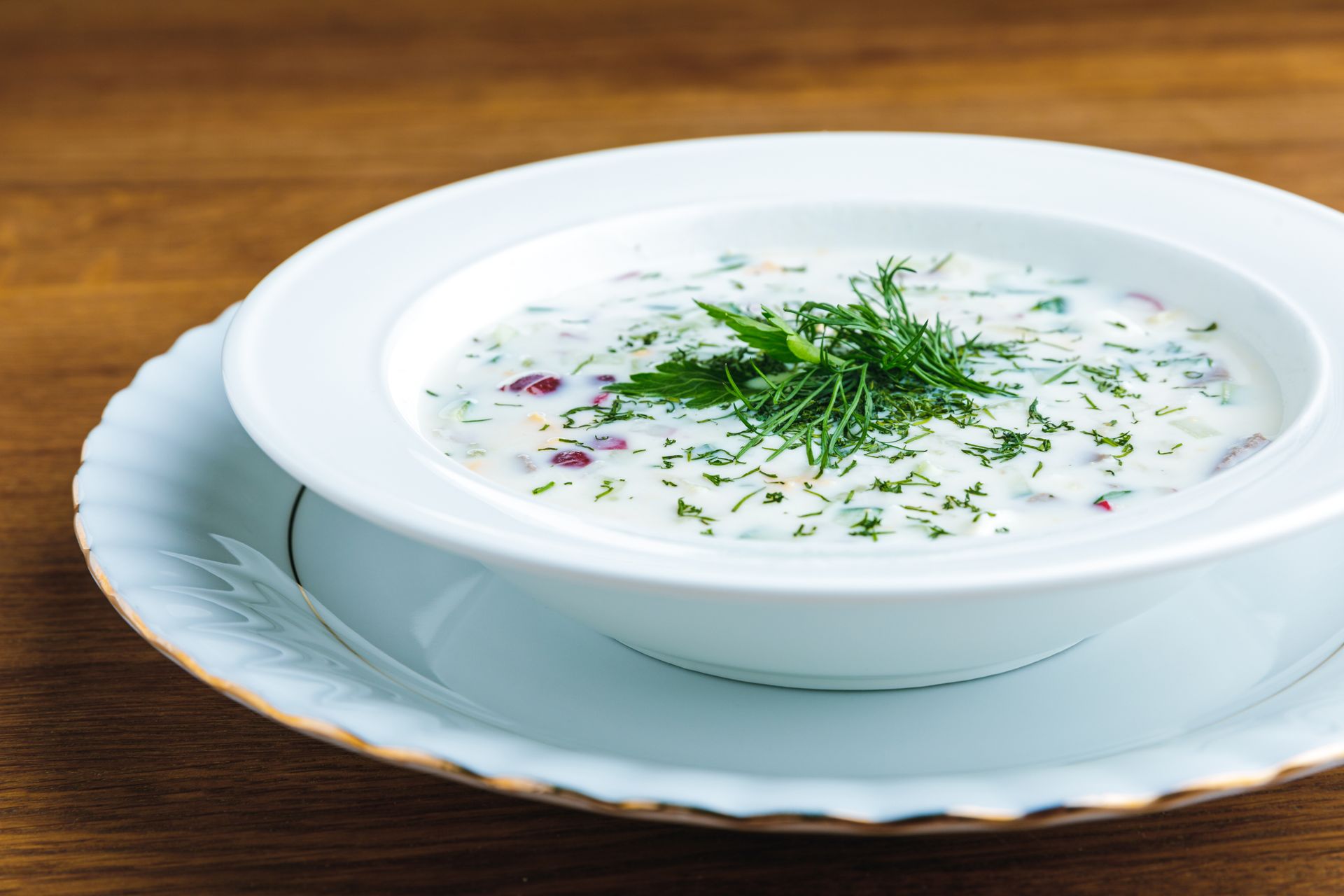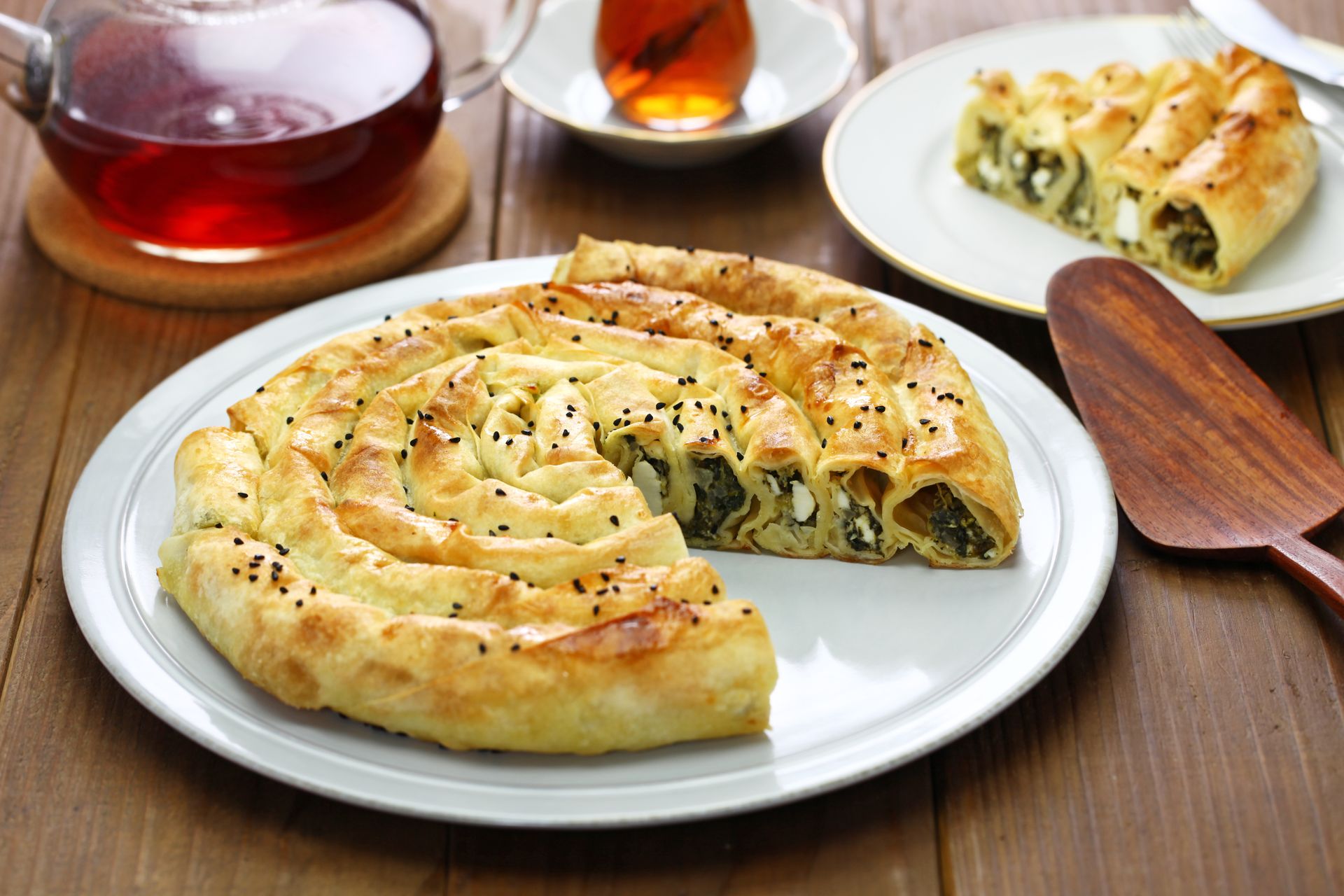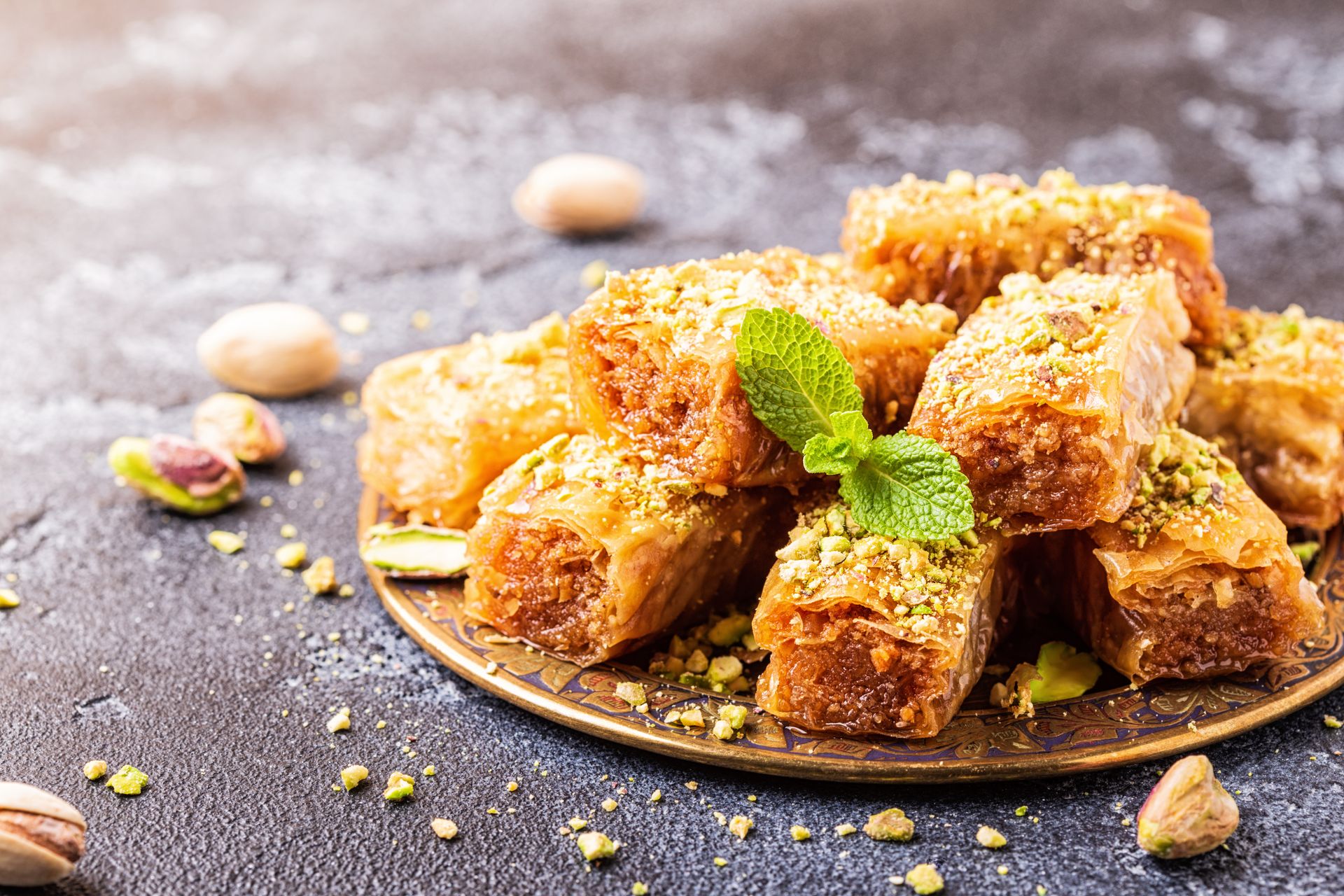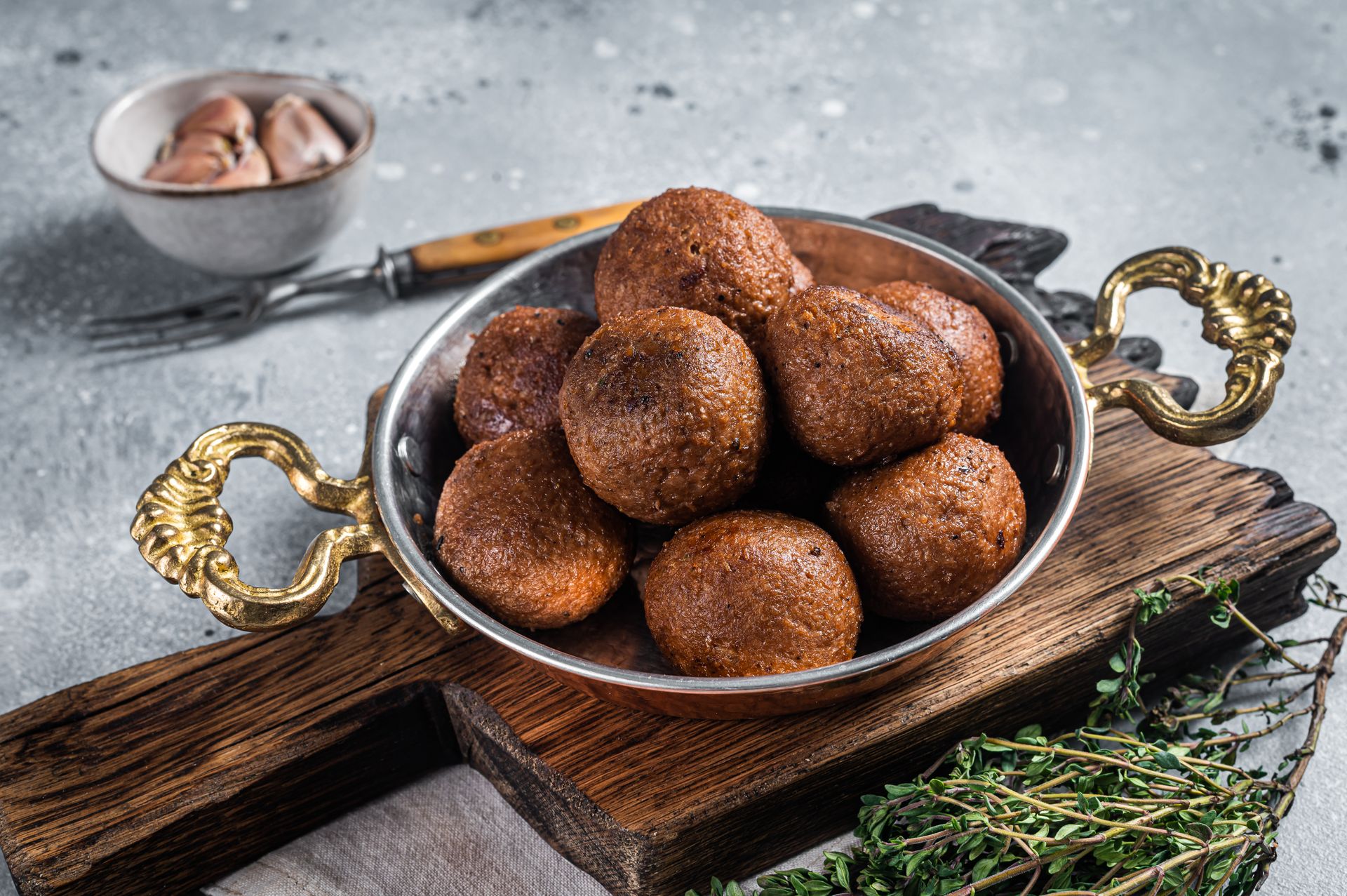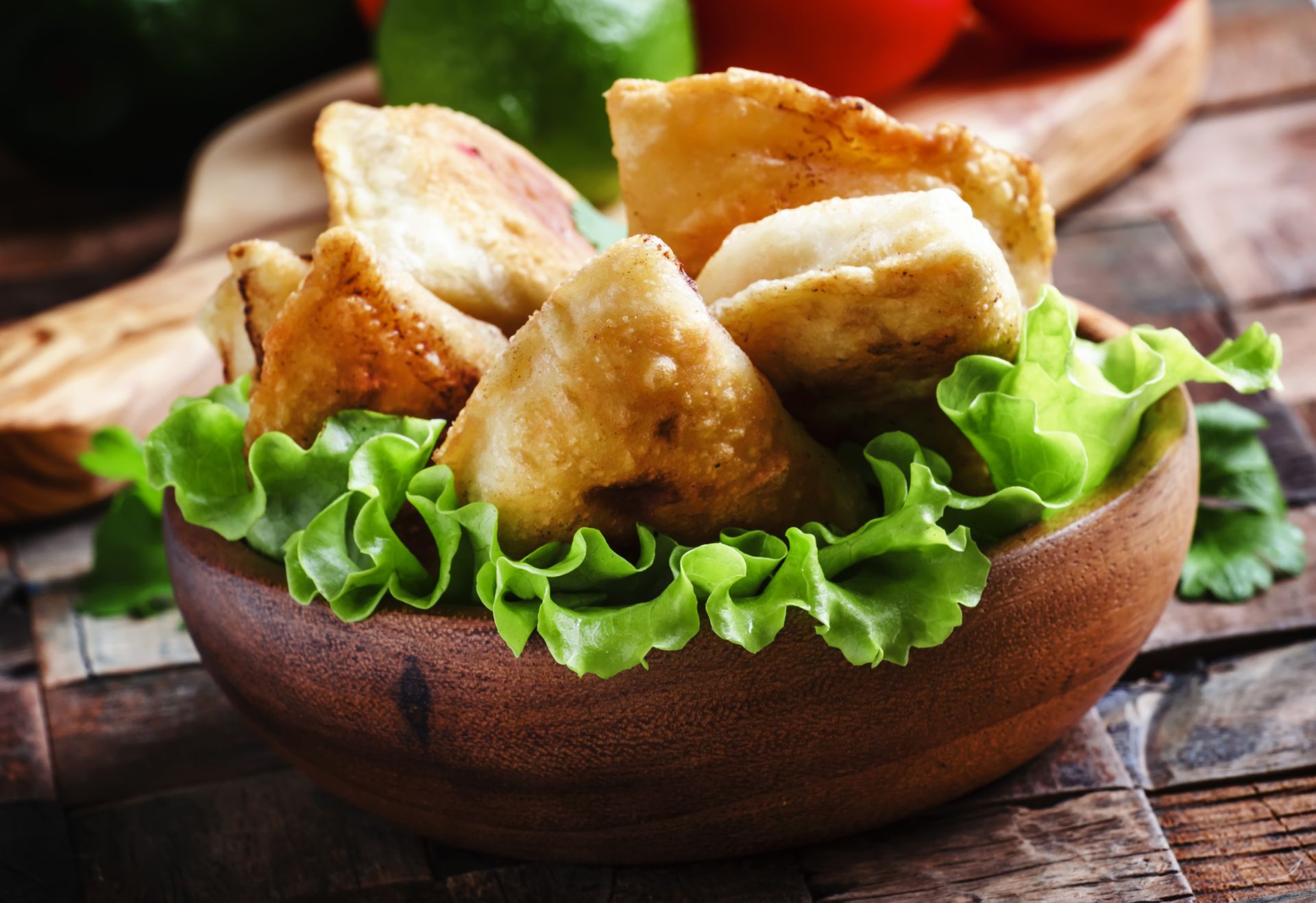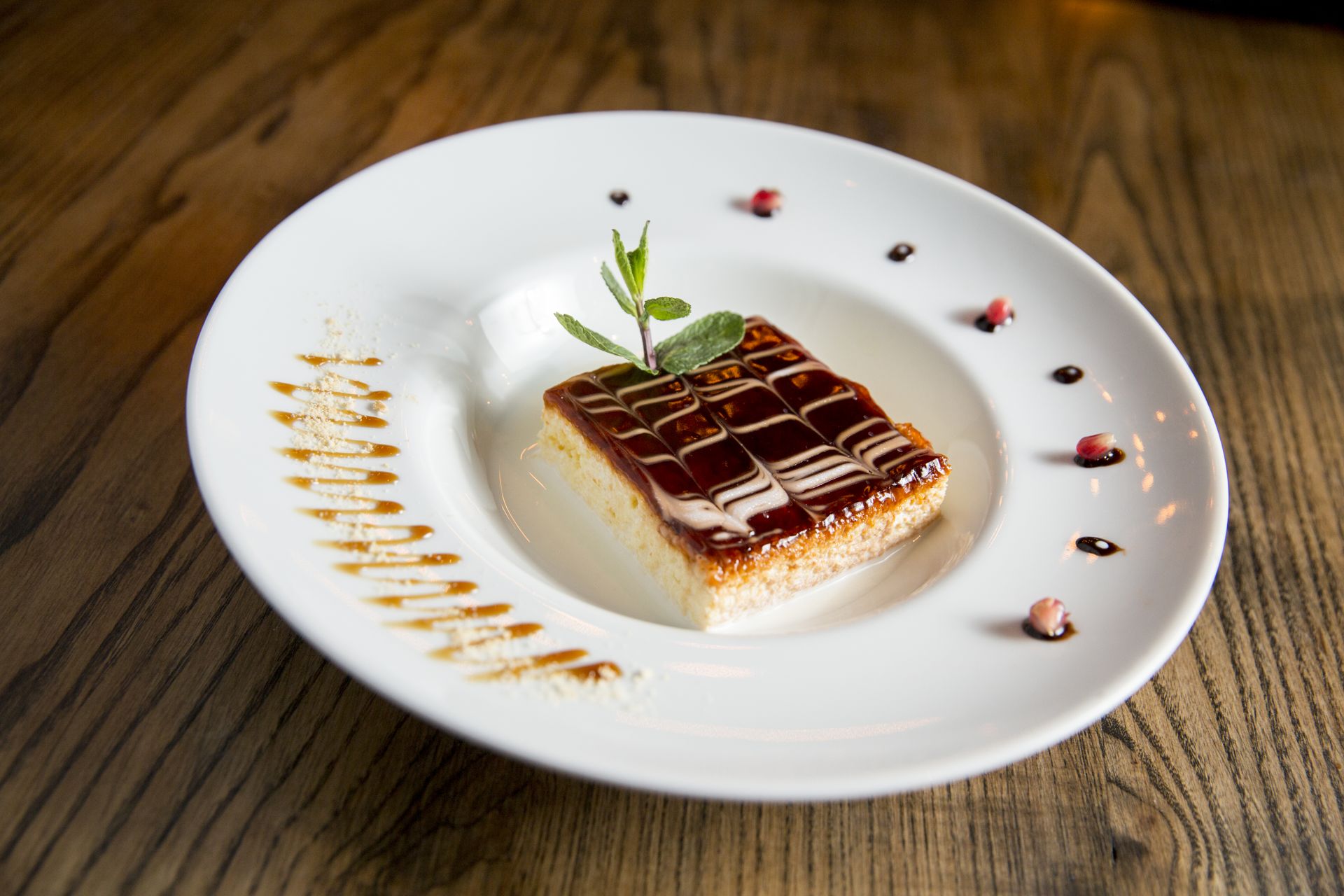The region of Southeast Europe is blessed with many delights. Apart from offering some of the world’s best beachside resorts, luxurious mountain holiday spots, rich culture and historical significance, and this all is sprinkled with the legendary hospitality of locals and surprisingly affordable tourist offerings, southeastern Europe is also a destination for culinary tourism.
Whether you are hitting the road to marvel at the gorgeous sights, or intending to raid the malls and boutiques, try to find some time in your busy schedule to indulge in the unique cuisine of Southeast Europe lands – you will never be disappointed.
National cuisine is the way to become a part of the country's culture in a truly pleasurable way and get yet another clue why this given land has become a popular tourist attraction. To get your mouth watering and inspire you to pack your things, we have compiled a list of must-try dishes you never want to miss when roaming around southeastern Europe.
Moldovan Food
Traditional Moldavian cuisine is famous for its wide variety of dishes and delicious taste. This is due to the fact that it was formed under the influence of the cultures of different nations who lived on this territory in past centuries: Ukrainians, Russians, Greeks, Jews, Germans, and others. Moldova is a country of grapes, fruits, and abundant vegetables, while sheep and poultry farming are contributing to its quickly developing economy.
The culinary highlight of this country is, surely, brynza – a variety of goat cheese that Moldova has been producing since the 17th century. Brynza is a popular ingredient in many dishes of national cuisine, but it also serves as a yummy appetiser.
Other delicacies you definitely want to savor in this southeastern region include:
Tochitura Moldoveneasca
It is a traditional Moldovan dish prepared from pork meat that is cut into small cubes. This delicacy is cooked over a low fire that causes the meat to give off its own juices. Tochitura Moldoveneasca is served over-easy eggs and mamaliga (corn mush). The recipe may also include other varieties of meat, such as beef, chicken, or lamb, while the addition of some tomato souse is also possible.
Moldavan Zeama (Zama)
It is a chicken soup with vegetables, and it is one of the favourite dishes of Moldovan people. Light and palatable, this soup is often served in the best restaurants in Moldova for business lunch.
Placinte moldovenesti (Moldovan pies)
This is what Moldavian residents are especially proud of. Placinte is essentially cakes stuffed with different fillings. These cakes are made of dough and puff pastry, and they can be filled with anything, be it cabbage, salty cheese, meat, or pumpkin – the imagination is the limit. Varieties of placinte with various stuffing can be found in the haute restaurants of Moldova.
Racitura (Meat Jelly)
It is another Bonne Bouche of this miraculous country. In this traditional dish, meat ingredients are cooked for a very long time over a slow fire until they turn into gelatin (jelly). Exceedingly tasteful, Racitura is prepared for big celebrations as a way to emphasise the significance of this event.
Chiftele (Flat Meatballs)
It is flat and round meatballs from Moldovan traditional cuisine. This dish is commonly prepared from minced pork, mixed with mashed potatoes and spices, and then fried in a large amount of oil.
Romania Cuisine
Romanian cuisine is a dainty tapestry woven from galore cultural influences over long centuries. Along with mystical Transylvania and legendary Dracula, national cuisine well deserves some exploration in Romania. Traditional Romanian food consists of a mixture of ingredients and features the best traits of Balkan, Turkish, German, Serbian, and Hungarian cuisines. Thanks to its vibrant history, Romanian gastronomy is varied, nourishing, and immensely tasty.
Here are five Romanian delicacies you should sample on a southeastern European tour:
Romanian Sarmale (Romanian cabbage rolls)
This is the food that you can smell on major streets of the country and be wondering what makes it so tempting. Sarmale is prepared from minced meat (usually pork or meat combinations) mixed with spices, rice, and onions. Then the entire stuff is wrapped in sour (fermented) cabbage leaves and stewed for a long while in a special sauce prepared of sauerkraut brine, tomato juice, and other ingredients kept secret.
Sangerete (Romanian Blood Sausage)
It is a sapid dish, consisting of a mixture of pig blood combined with minced meat, fat, and spices – not a vegan’s delight! The sausage is often enhanced with garlic, thyme, allspice, coriander, or nutmeg, as well as it can also contain boiled rice to elevate the taste. Due to the presence of animal blood, the sausage is very juicy and has a distinctive flavour. Bloody sausages are especially popular in Transylvania – guess why!
Romanian Mamaliga
This simple yet delectable dish is made from ground corn grains boiled in water, with additions of salt, sunflower oil, and other spices. Mamaliga is healthy and goes well with gravies or stews. To enhance the taste, chefs in restaurants often pair the dish with salty sheep cheese.
Bulz
Bulz is a traditional Romanian meal made from cooked polenta (corn mush or mamaliga) that is rolled into balls and stuffed with a creamy filling. The polenta balls are then grilled, pan-fried, or baked until a crisp, slightly charred crust forms on the outside. Bulz balls are generally stuffed with butter and soft sheep cheese, but bacon or ham can be also incorporated into the filling to achieve a more balanced taste.
Amandine
It is a legendary Romanian dessert where chocolate, caramel, and fondant cream produce a fit for the gods. Never miss this chocolate cake when traveling around Romania.
Ukraine Cuisine
There are many reasons why we all are fond of Ukraine, but its national cuisine is something truly extraordinary. Dishes in this south east country fully reflect the national ideals and moral values of this incredible population: family, faith, and respect for the land. This nation cherishes the homemade meals, and the homely atmosphere is often associated here with the wonderfully smelling fresh-baked bread.
Here you can feel the culinary influence of Eastern European neighbours, but Ukrainian food is outstanding thanks to its organic nature and deep significance. Dishes are prepared with love, and recipes are passed down from generation to generation. From sweet and sour to savoury and aromatic bites – the following 5 Ukrainian dishes never fail to whet the appetite.
Ukrainian borscht
It is an extremely tasty beetroot soup that is also largely appreciated in other Slavic countries. Bright-red because of beet, borscht is often topped with fresh sour cream that perfectly balances the meat and cabbage foundation that constitutes this traditional receipt.
Ukrainian Holubtsi (Cabbage rolls in Ukrainian)
These cabbage rolls are another testament to the prowess and commitment of Ukrainian chefs. Traditionally, the leaves of cabbage are stuffed with minced meat, but vegetarian versions are also encountered. Holubtsi rolls are stewed in a tomato or sauerkraut juice, and they can be coupled with marinated mushrooms.
Nalysnyky (Nalesniki)
They are thin pancakes that are stuffed with something exceedingly tasteful and then folded. Fresh fruit, jams, and other sweet fillings are commonly used to create nalesniki, but more substantial stuff can also be used, such as cheese, mushrooms, or meat.
Chicken Kyiv
It is a treasured Ukrainian dish that consists of boned chicken meat that is stuffed with chilled butter and herbs and then shaped into a roll. Next, the roll is coated with egg and breadcrumbs, and deep-fried.
Deruny (Potato Pancakes)
These hearty potato patties incorporate the most basic ingredients like potatoes, eggs, onions, baking soda, and salt to be all mixed and fried in oil. But the simplicity of the receipt never compromises the tastiness of the ready product.
Georgia Cuisine
The land of Georgia is beautiful, no matter how you slice it, but when it comes to culinary art, this country is truly second-to-none. Travellers flock to this destination from far away not only to take in fabulous natural beauties and experience everything that centuries-old monasteries have to offer.
Georgia can be a great discovery for gourmets looking for absolute culinary delights. Hospitable and accommodating to the core, Georgian locals tend to lay a table for any occasion, and the dishes to be served are as good-looking as scrumptious.
Here are five Georgian foods you definitely want to try when you embark on a tour of southeastern Europe:
Khinkali (Georgian Dumplings)
This toothsome viand is the landmark of Georgian cuisine. Pieces of dough are filled with minced meat that is mixed with local species, onions, pepper, salt, and cumin. Then the dough is twisted in a way that there is a knot at the top. Curiously, the knot of Khinkali should never be eaten because it serves to hold the dumpling, and it is usually left on the plate, indicating how many pieces you have consumed.
Lobio (Bean Soup)
Lobio is a Georgian invention that belongs to a wide group of dishes that incorporate beans as the main ingredient. Most often, these are red kidney beans boiled with various spices to make a thick stew or soup. It can also be prepared as a flavourful salad, containing red beans and fragrant herbs.
Dolmas
It is a tasty and earthy dish whose concept revolves around meat or veggies being wrapped in a leaf. Leaf wrappings can be various, including vine leaves, cabbage, onions, or sweet pepper. Leaves are traditionally stuffed with rice and ground meat, but bulgur can also be used.
Satsivi
It is a thick and flavourful nut-based souse. The foundation of this dish consists of toasted walnuts, and Satsivi typically accompanies meat dishes or is used to dip bread. Many other ingredients can be used to take the taste of this paste to the next level, including cilantro, garlic, yellow onion, paprika, and cinnamon, among other spicy options.
Khachapuri Adjaruli
It is basically bread that is topped with cheese, butter, and eggs at the end of a baking process. A classic receipt of Khachapuri includes traditional Georgian cheese Sulguni or Imeretian, but some restaurants offer the bread with mozzarella and feta to appeal to different groups of foodies.
Serbia Cuisine
Serbian traditional cuisine contains many tastes and smells, much owing to the mixture of influences from various nations who have just passed through or lived in this southeastern European region. As is the case with culture in general, this fusion of different influences has led to authenticity, so today, the appetising Serbian table offers unforgettable specialties that cannot be relished anywhere else.
Serbian cuisine is characterised by very varied, hearty, and spicy meals, which are derived from a mixture of Greek, Bulgarian, Turkish, and Hungarian cuisines. It is dominated by the presence of meat, dough, vegetables, and dairy products. While thinking of what to visit in Belgrade or other Serbian city, always try a new restaurant and culinary masterpiece there!
The absolute stars of the Serbia’s national cuisine include:
Punjene Paprike
A succulent morsel, Punjene Paprike is essentially big sweet hollowed-out peppers stuffed with a mix of meat and rice, and served with tomato souse. The receipt can be enhanced with onions, olive oil, and seasonings to make it truly mouthwatering.
Serbian Gibanica
It is a quintessential Serbian cheese pastry consisting of phyllo dough, white cheese, eggs, oil, and flour. Variations of this dish range from sweet to savory, and from simple to festive and complex multi-layered pies. Gibanica is traditionally eaten for breakfast, but a gourmet can enjoy it at any time of day.
Cevapcici
A variety of grilled minced meat sausage, Cevapcici is one of the most well-known and treasured Serbian specialties. Recipes can be completely different, but the timeless classic is made with a mixture of beef, lamb, mutton, and pork enhanced with garlic, paprika, black pepper, and salt. The heavily spiced meat mixture is shaped into small sausages and then roasted over an open fire.
Pljeskavica (Serbian burger)
It is a flat, round patty of minced beef, pork, and veal, or a combination of several meat types, that is garnished with aromatic seasonings such as paprika, salt, pepper, and in some cases, finely chopped onion and garlic. The patty is grilled and served inside a flatbread called lepinja, allowing you to enjoy a flavourful and juicy version of a hamburger.
Cvarci (Čvarci)
A countryside dish, Cvarci is essentially deep-fried pork cracklings. This national Serbian delicacy can be savoured either as individual tidbits or as accompaniment to beer!
Montenegro Cuisine
This Balkan country brings you the tastes you cannot live without once you try them. Montenegro spoils you with the best that the sea has to offer: lots of seafood, all kinds of fish and other food specialties. As you travel through this southeastern country, get ready to be continuously surprised by the breadth of delectable flavours.
Food in Montenegro is lip-smackingly delicious, and the diversity on the menu is hardly comparable to anything else in the Balkan Peninsula. Old fishing traditions of the country bring many delicious seafood dishes to your plate, offering you a mix of fantastic Mediterranean, Italian, and local culinary delights. Make sure you tickle your taste buds with the following foods while visiting this wondrous southeastern European country.
Burek
It is a savory pastry that is traditionally rolled into a snail-like shape. This pastry includes layers of phyllo dough that are stuffed with various delectable fillings, including ground beef, cheese, and even potatoes. A popular local adage says that if a woman can cook a good burek, she is ready for marriage.
Ispod Saca
This delicacy is for meat lovers because Ispod Saca is essentially a roast. The dish can be prepared of virtually any sort of meat, including lamb, veal, or goat, which is fried with different vegetables, such as carrots, onions, potatoes, and tomatoes. This everyday staple is cooked under a metal dome covered with coals.
Buzara
It is a seafood stew that is always included in the menu of every restaurant on the coastal line of Montenegro. Buzara can be white and red – the color depends on the presence of tomatoes. Both versions typically incorporate wine and can use different ingredients. Still, the foundation for Buzara is generally shrimps, mussels, clams, or lobsters. This delicacy is often served with polenta or crusty bread.
Kacamak
It is a porridge made of wheat, buckwheat, barley, or corn flour prepared in salted water. It is traditionally served with cheese, sour milk, melted butter, pork fat, or oil. Alternatively, Kacamak can be baked in an oven. Overall, it is a simple yet tasty everyday dish that can supply you with enough energy for the whole day.
Njegusi Proscuitto
It is a dried and durable meat delicacy processed from a ham or pork. The preparation technology has it that the meat is heavily seasoned with sea salt, put under a heavy press to remove excess liquid, then smoked and dried in the cool air. The whole process may take about a year to produce such a savory tongue breaker – raise your fork!
Croatia Cuisine
A beautiful seaside country with centuries-long history, Croatia is a place where many different cultures are interweaved, producing amazing exchanges of habits and traditions. The result of these interactions is an insanely delectable cuisine! Croatian gastronomy has Turkish, Slavic, Greek, Hungarian, and even Mediterranean traces, which explains why every dish in this southeast country can easily cause a gastronomic orgasm. Here are at least five delicious reasons why you should immediately book tickets to Croatia.
Crni rizot (Black risotto)
It is a rice dish made of fresh squid or cuttlefish, you can taste this food in Split or other seaside Croatia cities. The ink of these marine critters gives the dish its signature black color. Still, other underwater animals, such as mussels, clams, and other shellfish, can also be added to this “intimidating” risotto. Take a selfie as your mouth turns black while you are eating crni rizot.
Strukli
A variety of pasta, Strukli looks like rolled dough that can taste either sweet or savory. Common fillings include cottage cheese, eggs, nuts, fruit, and poppy seeds. The dough for Strukli is cut into small pieces, which can then be baked or fried. If baked, the dish is then topped with butter or sour cream.
Pasticada (Queen of Dalmatian cuisine)
One bite of Pasticada can get you to sit back in awe at the divine taste of this national Croatian dish. This food consists of beef that is marinated in vinegar and herbs for several days, and then stewed in red wine with bacon, tomatoes, dried prunes, and other veggies. As a result of all these manipulations, Pasticada develops an insanely pleasant taste, truly a fit for a king or a queen.
Croatian Peka
It is a traditional Croatia cuisine meat dish. They take meat (beef, chicken, lamb, or even octopus), put it into an iron pan, add potatoes and spices, and then cover with a heavy metal lid. Then hot coals are placed over that lid, leaving Peka to cook slowly in its own juices until the meat is ultimately tender. It takes much time and effort to cook Peka, so being treated with this dish means that you are loved and respected by that person!
Fuzi
Fuzi is hand-crafted quill-shaped pasta, each piece of which is made by wrapping dough around the handle of a wooden spoon. It is often paired with creamy truffle sauce or meat goulash.
Slovenia Cuisine
Lovely Slovenia is the next gastronomic destination you should certainly visit while exploring the corner of southeast Europe. This mountainous country is the crossroads of Slavic, Roman, and German cultures, while its delicious cuisine was formed under the influence of its geographical neighbours, which include the Alps, the Mediterranean Sea, and the Pannonian Basin.
In 2021, Slovenia won the title of the best European Region of Gastronomy, while Slovenian orange wine is a unique phenomenon in the international alcohol market. There are other irresistibly tasty reasons why you should find where to stay in Ljubljana or book a tour to Slovenia.
Kranjska Klobasa (Carniolan sausage)
It is a Slovenian culinary specialty that is made of the finest pork and bacon accompanied with garlic and pepper. The sausage is reddish-brown on the surface and has a slight smoky smell; in the cross section, the meat is pinkish-red, while the bacon is creamy white and does not dissolve. The texture is tight, crispy, and juicy, with a full flavour that is typical for desalinated, carefully seasoned, and smoked pork.
Prekmurska Gibanica (Prekmurian Layer Cake)
This layered pastry is rightfully considered the best delight among desserts of Slovenian national cuisine. The foundation dough can be filo or strudel, while layers can contain poppy seeds, apples, cottage cheese, or walnuts. This tongue breaker can also be topped with sour cream. Insanely delicious, Prekmurska Gibanica is a caloric bomb that gym bunnies should stay away from.
Zganci (Žganci)
It is a simple, yet pretty tasty everyday dish prepared of corn flour, water, salt and butter. Zganci is usually served with cream or yogurt, but it can also go well with fried bacon.
Stefani Pecenka
It is a variety of a roast in Slovenia. The dish is made of minced meat seasoned with herbs. The peculiarity of this dish is that the meat is stuffed with hard-boiled chicken eggs. Stefani Pecenka is a hearty main course that pairs well with roasted potatoes and other treated veggies.
Frtalja
It is a classic rustic dish, a variety of an omelet. The traditional receipt contains eggs, flour, and fresh herbs such as spring onions, cilantro, and chilli, among other tasty seasonings. If enhanced with cheese, it makes a nourishing lunch or snack. Frtalja can accompany meat, fish, and salads as well, making them taste even more delicious.
Hungary Cuisine
If you visit Hungary, rest assured its amazing cuisine will creep its way up to your list of favourite delicacies. Hungarian receipts resemble those of Central European, still, Eastern European influences are also obvious. Hungary's most iconic traditional dishes are a real pleasure for your taste buds and a hard challenge to your waistline.
The mouth-watering cuisine is a good reason for visitors to come back to Hungary year after year as some local dishes have a 1000-year-old history! Here are five deliciousness solutions you should seriously consider trying while exploring Hungary.
Hungarian Goulash (Gulyás)
It is a delectable soup with meat and potatoes. The receipt can be frequently enhanced with egg noodles for extra tastiness. The best goulash is prepared in a kettle over an open fire. Scrummy and hearty, it is one of the most popular dishes in Hungary.
Hungarian Fisherman's Soup (Halaszle)
As the country abounds with rivers and lakes, fishing has become an important part of Hungary’s economy, and many fish dishes have a long history. Halaszle is prepared of mixed river fish that is heavily spiced with hot paprika.
Hungarian Chicken Paprikash (Csirke Paprikas)
It is a thick stew whose foundation is made of chopped chicken thighs that are generously spiced with red paprika. The dish is served with a large amount of sour cream.
Hungarian Meat Pancakes (Hortobagyi Palacsinta)
It is an extremely popular Hungarian dish flaring on the menu of almost every restaurant in the country. These pancakes can be filled with different minced meat and served with paprika-sour cream sauce. Yet, they can also be sweet to act as a finger-licking dessert.
Langos (Deep-Fried Flat Bread)
This flatbread is fried in a huge amount of oil and served with endless variations of toppings. A popular street food, Langos can be topped with mashed garlic, sour cream, or grated cheese, but the sky is the limit when it comes to garnishing this wickedly good flatbread.
Slovakia Food
Slovakian gastronomy is praised to the skies by many travel bloggers and magazines. The traditional cuisine is hearty, rich, and immensely yummy, but many local wineries and breweries can also brag about world-class quality.
The country enjoys a prime location in Central Europe, and its cuisine was developed by the influences of neighbouring regions, including Hungary, Austria, the Czech Republic, Poland, and Ukraine. Due to Slovakia's central location and rich history, many national dishes can also be encountered in adjusting regions, but the Slovakian people have added their own special twist to the local table. The following Slovakian culinary delights can bring the water to your mouth.
Bryndzove Halusky (Dumplings with sheep’s cheese)
It is a national dish that refers to the top-quality, creamy, soft-textured, locally produced cheese. This cheese is served on top of halusky (potato dumplings). Often, bryndzove halusky is paired with smoked bacon and sausage to give no chance to your hungry.
Kapustnica (Slovakian Cabbage soup)
This cabbage soup is created by mixing sauerkraut with smoked pork products, potatoes, dried mushrooms, paprika, black pepper, and garlic. The rich flavour of Kapustnica is something to die for.
Vyprazany Syr (Fried cheese with French fries and tartar sauce)
It is a traditional Slovakian snack where a lump of cheese (usually Edam) is coated in eggs, breadcrumbs, and flour, then deep-fried until developing a crispy crust. It is traditionally served with meat or potatoes and topped with creamy sauce tartar. It is quite an unhealthy treat, but thoroughly delicious.
Slovenske Palacinky (Slovak pancakes)
They are thin crepes stuffed with all possible delicious things such as jam, cinnamon plus sugar, or hazelnut spread. It is the perfect dessert to finish the meal.
Bryndzove Pirohy (pierogis stuffed with bryndza)
It is a tempting Slovakian dish where potato dumplings are filled with bryndza cheese and decorated with sour cream on top. Bits of fried bacon can also be added to get that yummy in your tummy.
Bulgarian Food
Bulgaria is famous not only for some of the best in southeast Europe coastlines and the legendary hospitality of locals, but also for its delightful cuisine that is an eclectic mix of Balkan, Mediterranean, Greek, and Turkish gastronomic influences.
Bulgarian cuisine is fresh and very tasty, valued for its quality vegetables and dairy products, as well as a decent assortment of mild spices. Pork and chicken tend to be the most preferred types of meat, although fish and veal specialties are also popular, and lamb holds a special place in Bulgarian cuisine. And of course, no Bulgarian tour can be ultimate without tasting the world-renowned Bulgarian wines.
Top five Bulgarian national dishes you should try at least once in your lifetime include:
Kebapche
It is minced meat that is spiced and then grilled. Kebapche is shaped into long sausages resembling hot dogs. Everyone who tries this dish says it is a wonderful gastronomic experience.
Mish Mash
It is a classic Bulgarian omelet. Mish Mash is made of eggs, sweet peppers, tomatoes, garlic, parsley, onions, and siren (Bulgarian feta cheese). It is a signature dish served for breakfast or lunch in the country.
Lukanka
It is a famous Bulgarian cured meat delicacy. This traditional aromatic sausage is created from a mixture of minced pork and veal. The sausage is usually thoroughly seasoned with salt, black pepper, and many other spices – each region in Bulgaria has its own receipt for Lukanka. The casing for the sausage is usually produced from cow or pig intestines, and the product is pressed on both sides to give it its distinctive flat shape.
Tarator
It is a soup, appetiser, or sauce traditionally served on Bulgarian tables. It usually includes ground walnuts, garlic, sunflower oil, and yogurt or tahini (a paste made from sesame seeds), and often cucumbers. Different herbs can be added, while the yogurt can be substituted with vinegar water or lemon juice.
Banitsa
It is the national pastry in Bulgaria. Banitsa is cooked by layering buttered puff pastry with a mixture of eggs, yogurt, and white cheese such as feta or siren. Apart from the classic cheese stuffing, this pie can include many other fillings, either sweet or savory, including mixtures of herbs and vegetables, pumpkin, apples, sugar plus vanilla, etc.
Albania Cuisine
Aficionados of delectable foods: Albania is just a paradise on Earth for you. Soft tender cheeses, fresh veggies, super tasty seafood, premium-quality desserts, and lip-smacking pastries – Albania has it all, and much more besides. This small country is a hidden gem of the Balkan Peninsula, but its Albania cuisine and its restaurants are some of the best in entire southeastern Europe and will accompany you all year long - either you're looking for European winter sun in February or Saranda & Ksamil beaches in July!
Featuring gorgeous fusions of classic Mediterranean and Balkan cuisines, Albanian gastronomy is a multiethnic journey that will enrapture even the most discerning gourmets. A trip to this southeastern Europe country is worth it just to try the next five culinary delights.
Byrek
It is a savory pastry where the layers of dough are stuffed with a mixture of salty cheese, milk, and eggs. The filling is wrapped in yufka – a thin sheet of simple hand-made dough consisting of flour, water, and salt. Yufka is generally coated with melted butter before baking.
Albanian Baklava
It is the timeless classic of Albanian dessert-making art where layered phyllo dough is filled with chopped nuts, coated with butter, and soaked in syrup.
Qofte
They are herby meatballs consisting of ground beef, chicken, or lamb. Qofte is generally fried, but you can easily encounter baked versions too. The dish is traditionally eaten for lunch or dinner with some salad, yogurt, and bread.
Petulla
It is a variety of fried dough. Petulla is served with powdered sugar or honey, but it can also be paired with savory flavours like feta cheese.
Albanian Trilece
It is a very tasty sponge cake that is soaked with three types of milk and covered with caramel. The traditional Trilece recipe dates back to the Ottoman era when goat, buffalo, and cow kinds of milk were used to prepare the pastry. Today, it is more convenient to cook the dessert from a mixture of whole milk, sweet or unsweetened condensed milk, and heavy whipping cream.
Summary
This was a list of must-try classics you should be looking for in the best cities of southeastern Europe. Rest assured, it is just the very tip of a huge, tremendously tasty iceberg, but it will definitely help you to get a sniff of some epically delicious menu titles while exploring southeast Europe. Rely on our blog to empower your next holiday decision!

